С релизом Windows 11 в 2021 году компания Microsoft сильно освежила дизайн своей системы. Однако кто-то может посчитать этот редизайн недостаточно кардинальным — именно поэтому я нашёл 10 обычных тем от сторонних разработчиков и одну особенную, максимально приближающую интерфейс к таковому в популярных дистрибутивах GNU/Linux. Они полностью преобразят интерфейс Windows 11. Покажу на фишки каждой из них, а затем расскажу, как их установить.
Темы
Все варианты оформления из этого материала устанавливаются с помощью программы UltraUXThemePatcher — о ней в конце статьи. Для начала нужно найти подходящую тему.
Everforest
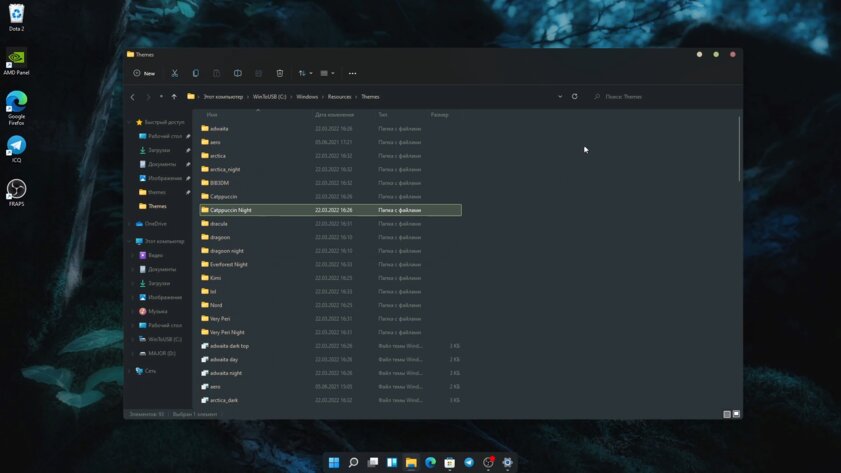
Одна из самых проработанных тем в подборке. Разработчик не просто сделал серое оформление с зелёными акцентами. Он подобрал к палитре минималистичные обои и сделал темы для сторонних приложений, часто использующихся при моддинге Windows. Например, есть модификации для Stardock Curtains, позволяющей ещё сильнее изменить внешний вид ОС, а также для плееров foobar2000 и PotPlayer и популярной программы StartIsBack для настройки «Пуска».
Macindows
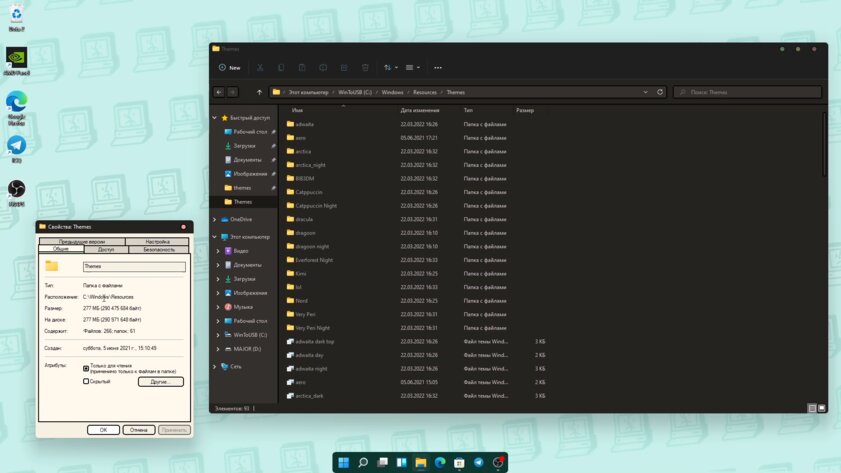
Тема Macindows выделяется использованием толстой обводки в интерфейсе и сочетанием тёплых и пастельных оттенков. Это позволяет частично приблизиться к ранним Mac OS X, где использовались похожие дизайнерские решения. Недаром тема так и называется, отсылая к первым компьютерам Macintosh. В комплекте с темой для Windows идут модификации для сторонних продуктов — плеера foobar2000 и док-баров Nexus или RocketDock. Кроме того, в архиве можно найти тонну стилизованных иконок для популярных программ.
Catppuccin
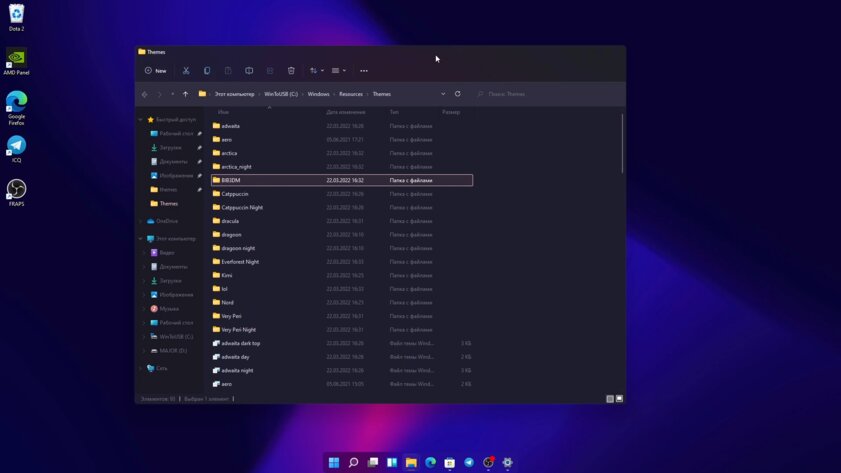
Catppuccin по цветовой палитре напоминает дизайн свежих macOS — тёмное оформление, граничащее с яркими акцентами и размытием. Фоном для окон служит отдающий фиолетовым серый, выделение и мелкие элементы окрашены в зелёный, оранжевый или пурпурный. В заголовках окон отчётливо видно размытый задний фон. Тема содержит в себе несколько видов иконок управления окнами, кастомизацию для сторонних программ, значки для папок и ярлыков, а также 26 заставок на рабочий стол.
Nord
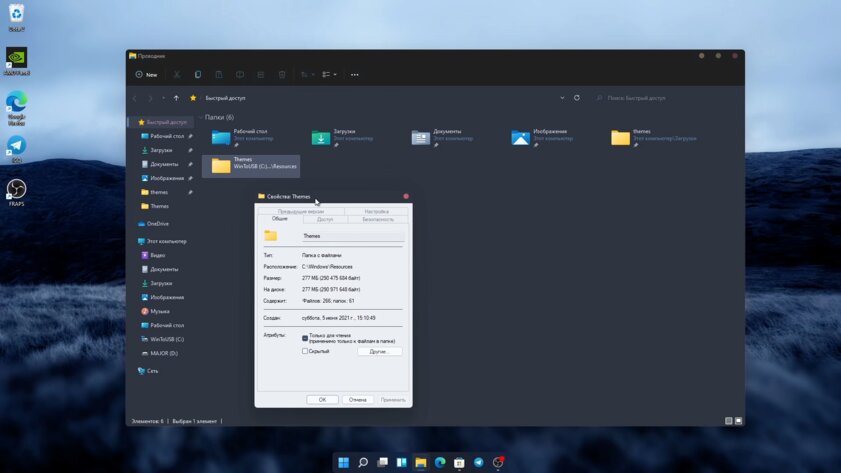
Эта тема использует популярную цветовую палитру Nord, которая нравится многим своими мягкими и холодными тонами. В честь неё пак оформления и получил своё название. Пользователям доступен как тёмный, так и светлый режим, а также три вида кнопок закрытия — из Linux, macOS и Windows. Nord устанавливает столь же спокойные как и общая цветовая гамма обои, всего доступно три вариации. Тема сделана качественно и подойдёт любителям минимализма.
Dragoon
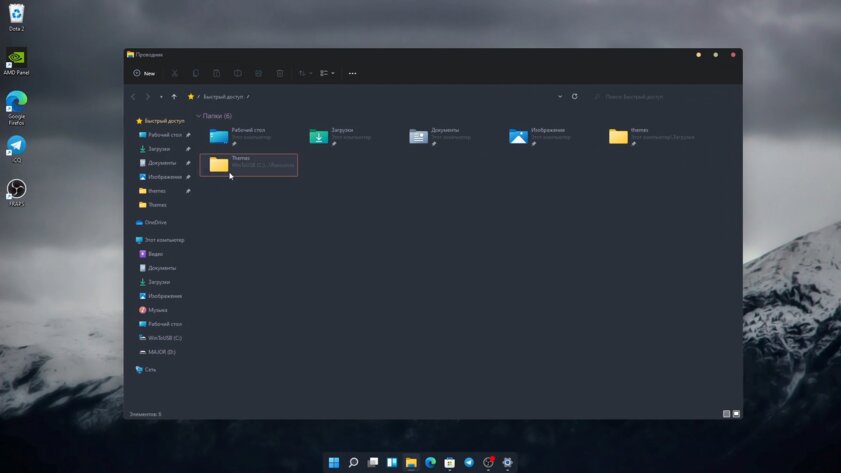
Ещё одно серое и холодное оформление для Windows. У него невысокая контрастность и несколько видов оформления: тёмный и светлый вариант. Тема заменяет фон на кастомный даже в дополнительных меню, но читабельность надписей ниже, чем у той же Nord. Dragoon содержит в себе набор настроек для утилит StartAllBack и Stardock Curtains.
Dracula
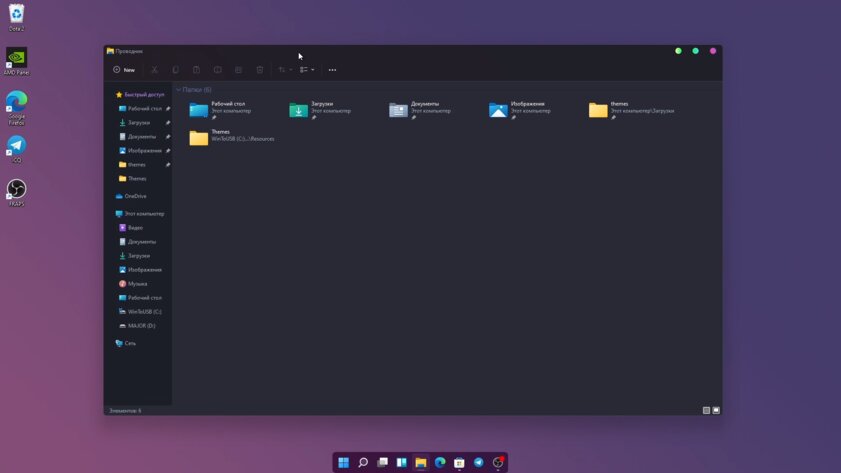
Dracula добавляет красок в интерфейс системы, не превращая его в цирк. Основным тоном является всё же серый, однако акцентными цветами служат розовый и фиолетовый. Иконки закрытия или сворачивания окон тоже заменяются на более яркие, нежели в стандартной Windows. Верхняя часть окон при этом поддерживает размытие. Обои продолжают сочетать в себе нейтрально-тёмные и ярко-насыщенные тона. А вот сторонним приложениям для кастомизации разработчик уделил не очень много внимания — есть тема только для StartAllBack.
Very Peri
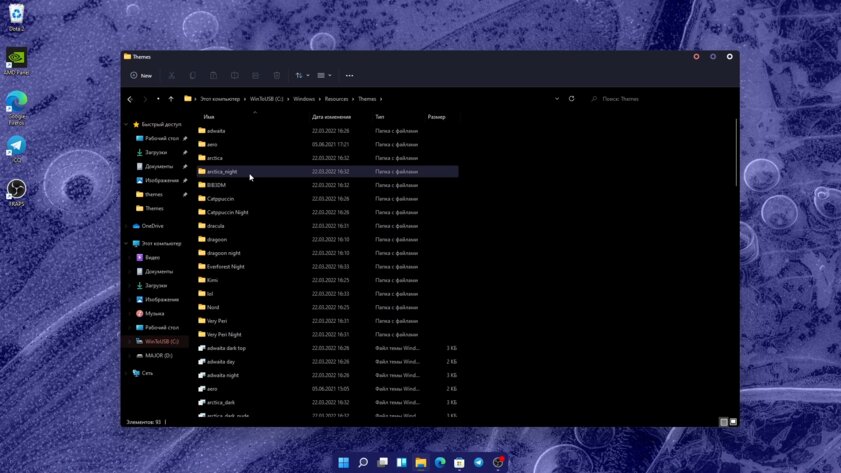
Компания Pantone признала Very Peri цветом 2022 года. Microsoft даже выпустила в честь этого коллекцию обоев для Windows 11 в сине-фиолетовых тонах. Энтузиасты пошли дальше и сделали одноимённую тему. Кроме обоев и фиолетовых акцентов оформление Very Peri добавляет чёрный фон в окно Проводника даже туда, где его нет в стандартном тёмном режиме, и меняет иконки управления. Впрочем, есть и светлый вариант. Как и в других темах из статьи, здесь есть моды для других приложений по кастомизации ОС.
BIB3
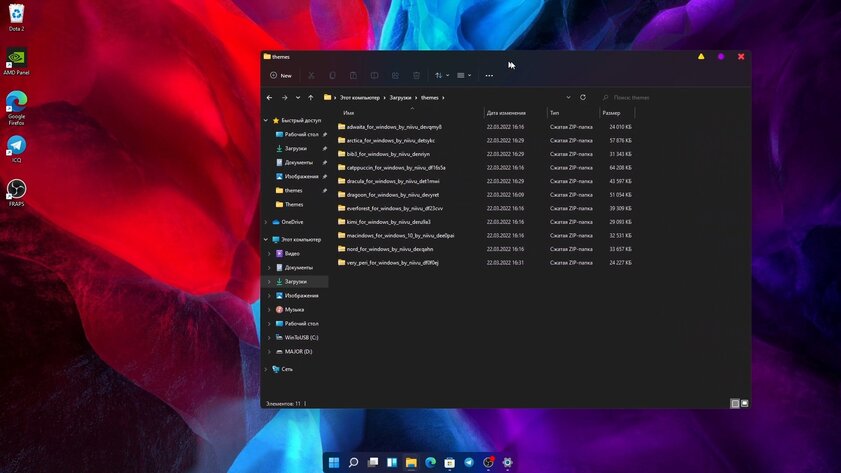
Оформление BIB3 очень похоже на ранее упомянутый Catppuccin. Главное отличие — в менее красочном основном цвете. Если в Catppuccin он тёмно-фиолетовый, то здесь исключительно серый. Кроме этого, BIB3 даёт выбрать иконки управления из macOS или Linux. Есть еще третий вариант от разработчика. В остальном же это довольно лёгкая тема — здесь нет ни фирменных обоев, ни модов для сторонних утилит.
Kimi
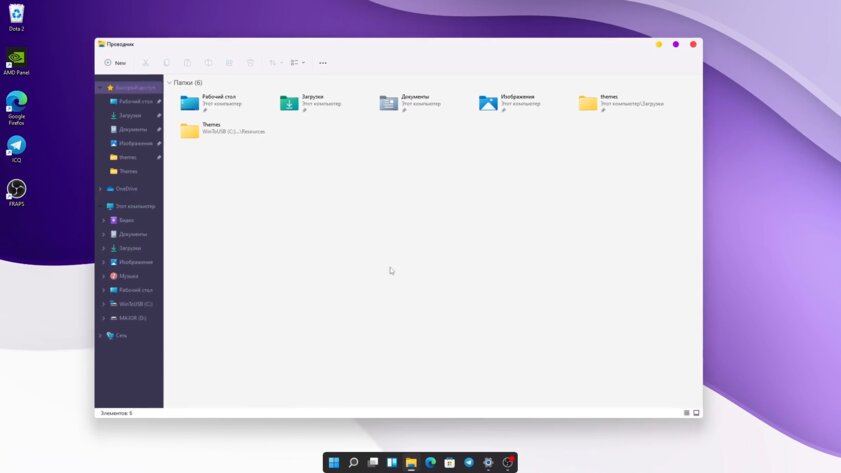
Kimi очень близка к предыдущему оформлению, BIB3. Схожие цвета, минимум изменений и модификаций. Однако у Kimi есть не только ночная, но и дневная тема с фиолетовыми акцентами и яркими значками.
Arctica
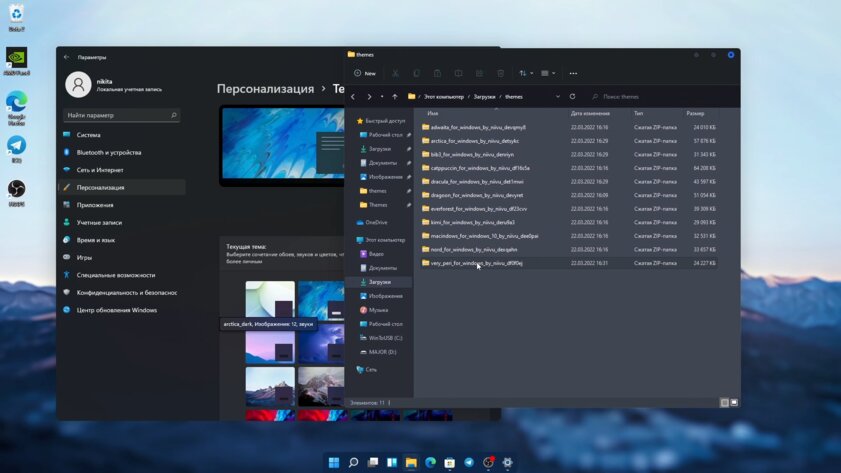
Тема Arctica не старается выглядеть сложно — простые и строгие цвета, никакой излишней красочности. Она подойдёт тем, кто устал от стандартного интерфейса, но не хочет превращать систему в зоопарк из разноцветных иконок и плашек. Arctica имеет при себе весь необходимый набор тем для сторонних программ и два цветовых варианта для разного времени суток.
Adwaita — та самая тема, которая превратит Windows в Linux
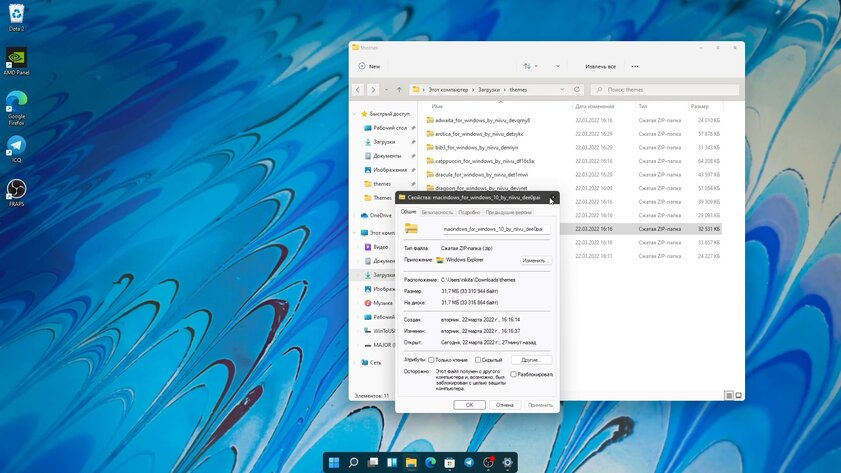
Это попытка перенести одноимённую тему, установленную по умолчанию для дистрибутивов GNU/Linux с оболочкой GNOME. Создатель этого оформления точно перенёс нейтральную цветовую палитру как для светлого, так и для тёмного режима. При этом остались некоторые фишки дизайна Windows 11 вроде полупрозрачной рамки окон. Adwaita меняет даже некоторые иконки интерфейса — например, кнопки закрытия или сворачивания приложений скопированы прямиком из Linux. Вдобавок идёт и набор из подходящих по стилю обоев, а также целый пак значков для папок и ярлыков.
Как установить
Прежде чем устанавливать темы, нужно поставить программу UltraUXThemePatcher. Запустившись, она создаст бэкап и попросит перезагрузить компьютер. После этого достаточно:
- открыть папку Windows/Resources/Themes/;
- перетащить туда файлы загруженной темы (обычно они находятся в подпапках Themes или Windows Themes — это зависит от создателей);
- открыть настройки персонализации самой Windows;
- сменить тему на нужную.

Are you in the thought of shifting from Windows 11 to Linux? But, it might be your work or favorite game that wants you to keep on using the same OS. Is the wide variety of software, games and ease of use? Well, you can follow any of the 8 steps below to make Windows 11 look and feel like a Linux OS and even more specifically like Ubuntu or Mint. Doesn’t that sound real? It is!
As a comparison window does not provide users with more customization options than Unix but it doesn’t mean it cannot be tweaked to look better.
Today, many third-party applications are available in the market that claim that they can change how it looks, but the issue is that they don’t have much stability and can also break various services.
Let’s dive into it..
Before you change the look of Windows
#1 – Using a premium theme or skin
Many themes are designed by Deviantart for all versions of Windows which look much like Linux. You can find many freemium ones from authors who make them as a hobby.
#2 – Use a custom Distro
There are some complications when we go for the free alternative as need to collect pieces from different places. The worst part, the internet is loaded with fake apps. In all this, we don’t know if they are going to break the OS in forcing modification.
Windows on the other hand do not provide users with much flexibility in modifying its default settings. Therefore we need to make use of what is available and we cannot change the system font plus the taskbar has no customization as well.
So what we are left with are third-party applications. These might not integrate with the system well and are not what we seek. So, we have made for you a list of online resources in various sections in which each is used to tackle one aspect of customization.
If we say that we need to customize it to look like Linux, then it is quite a huge topic. Keep in mind that no two distributions look the very same so what we are left with is the customization to look like default Ubuntu.
You would ask, why not just download and install Ubuntu? You will need to learn Linux commands and how to navigate the terminal CLI. The choice is yours.
Prerequisite: Make sure your know-how themes and skin packs work and how to install them before you continue. This will make the guide much easier to follow.
Make your Windows 11 PC or Laptop Look Like Linux – Give it a Ubuntu or Mint Feel
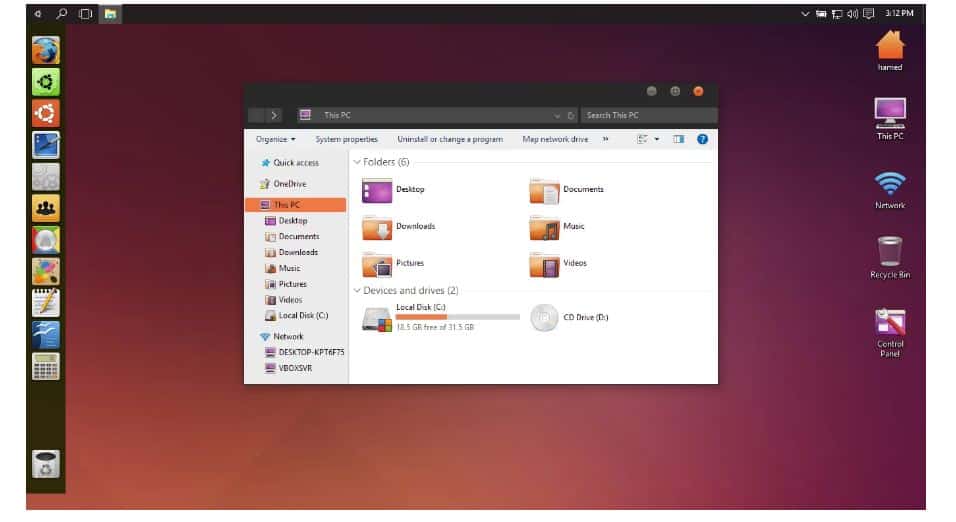
Alter your mouse cursor
- You need to download Ubuntu cursors.
- Once done, head over to the “download” folder.
- Hit file download and choose “extract all”.
- After this click the “start menu” and type in “mouse settings”, this shall bring up a new window.
- Choose “additional mouse options” from under “related settings”.
- Head over to the “pointers” tab.
- With “normal select” choose, you need to click on “browse”.
- Now, go to the newly extracted folder.
- Choose “Ubuntu normal cursor file” and hit “open”.
- Hit “apply”, the cursor of the mouse should now change.
- For all cursor types just repeat steps 7-9.
- Hit “OK”.
Give your accents a new life
- You need to click right on the desktop and then choose “personalize”.
- Hit “colors”.
- Next, you need to enable “transparency efforts” if they are not enabled already.
- Go down to colors and then choose “custom color”.
- Choose “more”.
- Then you need to enter “#S6E349” as hex color code and hit “done”. This is the dominant color code used in Ubuntu according to their official site.
ALSO CHECK: The Best Ubuntu GTK-based Themes To Install.
Hideaway your icons
- You need to click right on the desktop and head to “View”.
- Choose “show desktop icons” from under the expanded view to uncheck it.
- The icons of the desktop should disappear. Now, to get them back all you need to do is repeat steps 1 and 2 plus you can also hide the recycle bin only.
Hide Taskbar
- You need to grab the “taskbar hider” app. Version 11 comes with a built-in way of permanently hiding the taskbar so we shall install this instead. You need to choose 32 or 64 bit as required.
- As it gets downloaded you need to extract the app to the “downloads” folder.
- Next, you need to open “PowerShell” or “Command Prompt” (from the keyboard press “Windows Key” + “X”.
- After this, go to this location by typing in “cd Downloads”.
- It would be best if you typed “TaskBarHider.exe –hide –exit”. This shall hide the taskbar.
- To get it back you need to type in “TaskBarHider.exe –show –exit”.
Give PowerShell a new look
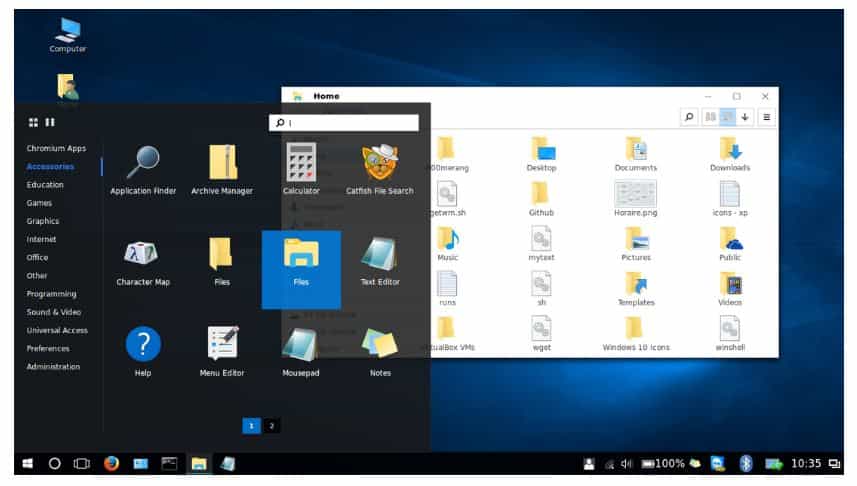
- First, you need to download Ubuntu Fonts.
- Once downloaded, you need to extract the “downloads” folder.
- Click right on the “desktop” and choose “personalize”.
- Next, select “fonts” there from the next navigation pane.
- The open folder has been extracted.
- Then you must choose all the fonts and drag and drop them to the “fonts” window. After this, you need to wait until they finish the installation.
- Open “PowerShell”.
- Click right on the window bar and then choose “properties”.
- Next, choose the “font” tab.
- Go down and choose “Ubuntu Mono” there from the list of fonts.
- If required, increase size.
- Hit “OK”.
You need to change the colors so please do:
- First, you need to open the “PowerShell”.
- Click right on the window bar and then choose “properties”.
- Choose “colors”.
- After this choose “screen text” and hit “white palette”.
- Choose “screen background”.
- There under the red, green and blue values, enter in 94, 39, and 80 respectively. This shall present you with Ubuntu’s official color palette.
- Hit “ok”
Add Linkbar Launcher
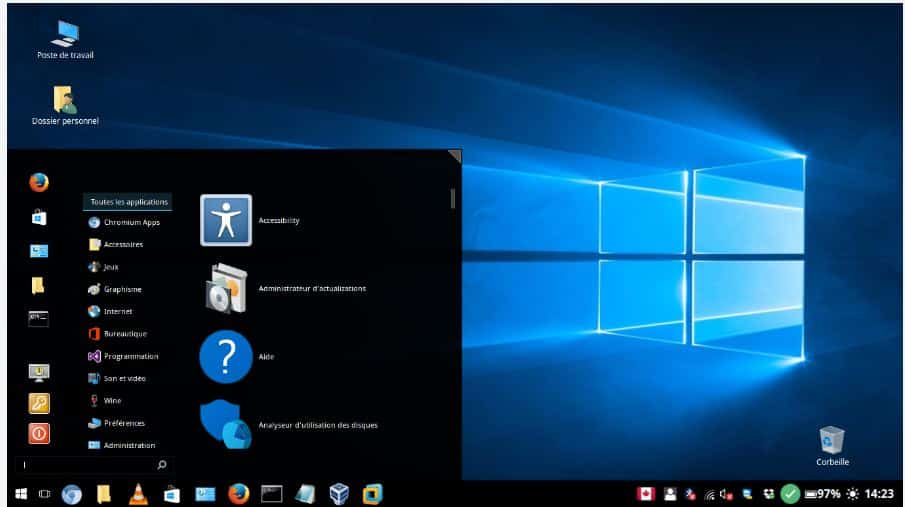
- First, you need to download the “Linkbar utility”.
- Once done, you need to extract the “downloads” folder.
- After this, you need to open up the extracted folder and then open “LinkBar.exe” or “LinkBar.exe (32-bit).
- For now, link bar appears on the screen’s left screen, on this click right and choose “settings”.
- You need to be sure that the style is set to “accent” in order to match with the color scheme of the window.
- Now if you wish to add a launcher, again click right on the “Linkbar” and then choose “shortcut” therefrom “new”.
- Hit “browse”
- Next, open up a folder location or browse to your desired app.
- Choose “ok”
- Hit “next”.
- You need to type in name of the new launcher and hit “finish”.
FEATURED: Best XFCE Themes for Ubuntu and Arch.
Add Ubuntu or Mint Wallpapers
- You need to get the “Ubuntu Wallpaper”.
- Head towards the “downloads” folder and click right on this.
- Choose “select as desktop background”. Dark wallpapers work well as well.
Tip: If you want to save time, look for a Linux Mint theme that you like and it will do all of this for you.
Use Windows Subsystem for Linux
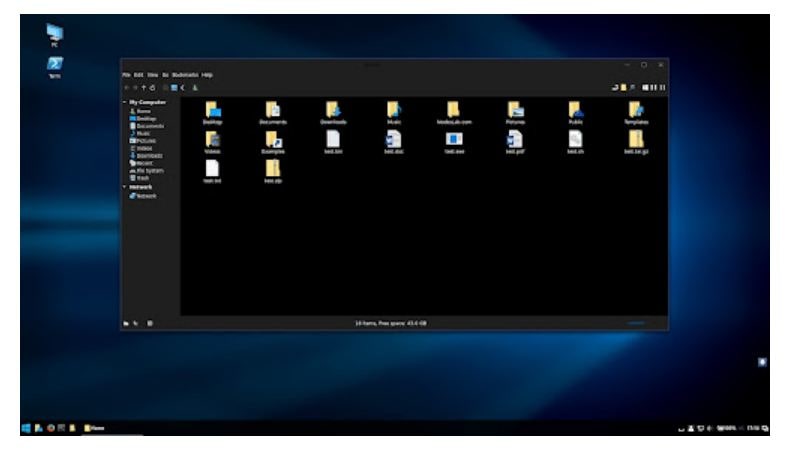
- First, you need to open “PowerShell” in “Administration mode”.
- Type in “wsl –install”. This might take some time to complete.
- Head towards “App Store”.
- You need to make search for “Ubuntu” and open it.
- Choose “install”.
- As the process of installation is completed, launch “Ubuntu” there from the “start menu”.
- You shall see a terminal window pop-up that can be used to enter commands on Windows as if Ubuntu were a machine.
One of the most ambitious projects given out by Microsoft is WSL. It is used to show its commitment to empowering Linux. Microsoft aims to make more contributions towards WSL so that it becomes even more powerful shortly. To put a long story short, it will feel more like Linux in upcoming new versions. You will need to change the colors in the terminal with the following steps:
- You need the first click right on the window bar of WSL and then choose “properties”.
- Choose “colors”.
- Choose “screen text” and then hit “white palette”.
- Choose “screen background”.
- From under red, green and blue values, you need to enter in values 94, 39 and 80 respectively.
- Choose “fonts”
- Choose “Ubuntu Mono”
- Hit “Ok”.
RECOMMENDED: Best Linux Distro To Use If you are switching from Windows.
Is it worth transforming Windows 11 to look like Ubuntu?
I know this is more tech and geek savvy when it comes to desktop customization. However, if you are an Ubuntu or Mint fanboy then it is a must I say. Windows 11 has many benefits hence why you would want to know how to make it look or feel like Linux. This will save you from actually having to use the terminal and be limited to a handful of alternative open-source software.
I am very interested in hearing your thoughts about this, please leave your desktop screenshots and feedback in the comments.
One of the best things about Windows is the ability to personalize its appearance to your heart’s content. With the release of Windows 11 just a day away, users are heavily customizing Windows Explorer and other elements of the user shell experience. If you’re a fan of Ubuntu and want Windows 11 to look like Ubuntu from the 2010s, here’s how to do so.
Windows 11 is chock-full of customizable options which, if the user has a particular visual element in mind, can be made to look like just about any other OS out there. Here are the steps you need to follow to make Windows 11 look like Ubuntu.
Step 1: Download necessary files
First things first, grab all the necessary files. There are about four things that you need to download. But don’t worry, we’ll go through them one by one so you know exactly what to do:
1. Ultra UX Theme Patcher
Firstly, download the Ultra UX Theme Patcher. Clicking on this link will take you to Manuel Hoefs’ website that hosts the theme patcher. Click on UltraUXThemePatcher at the top.
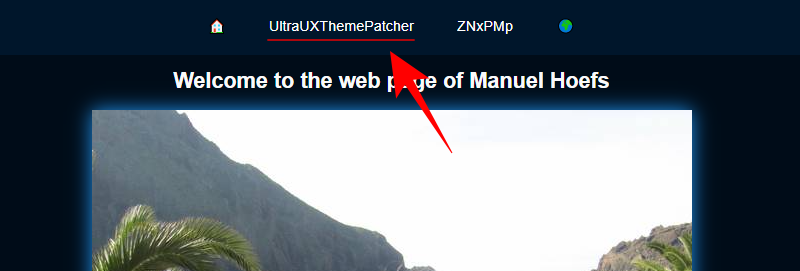
Then click on UltraUXThemePatcher under “Download”.
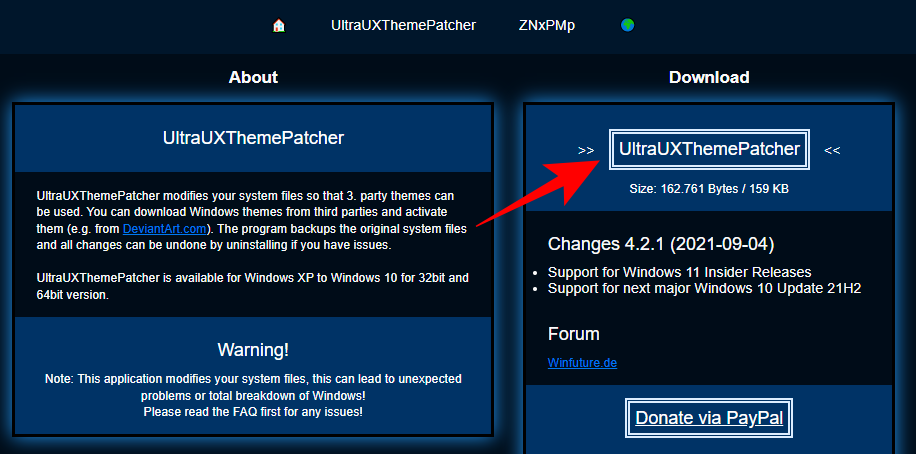
Once the download finishes, move on to the next file to download.
2. KOZ-Theme
This is the Ubuntu theme that will make Windows 11 look like Ubuntu, or at least most of its constituents. Download the KOZ-Theme here.
You will require a DeviantArt account to download this theme so make sure you sign up and log in if you haven’t done so. Scroll down and click on the Download icon under the screenshots.
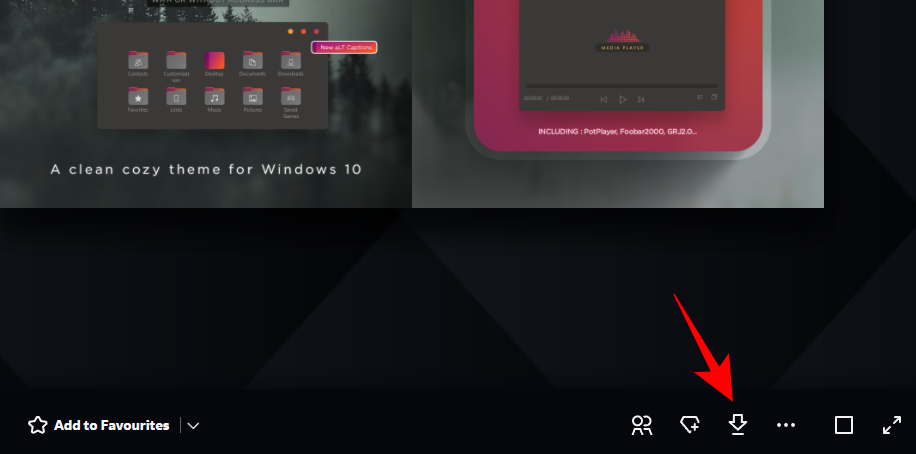
This will download the theme as a zip file.
3. 7TSP Icon Patcher
This is required to patch the icons that are found within the KOZ-Theme above. Download the 7TSP Icon Patcher here.
Again, click on the Download icon under the screenshots.
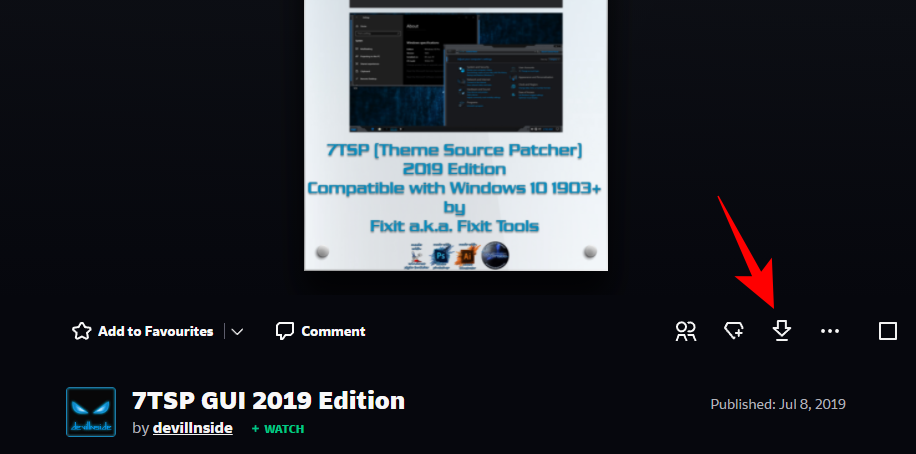
The file will be downloaded as a zip file.
4. Old New Explorer
This is required to modify the Explorer’s functions to make them look like that of Windows 7 and then the theme will further patch the Explorer to look like Ubuntu. Download the OldNewExplorer here.
Click on the Download now button on the page linked above.
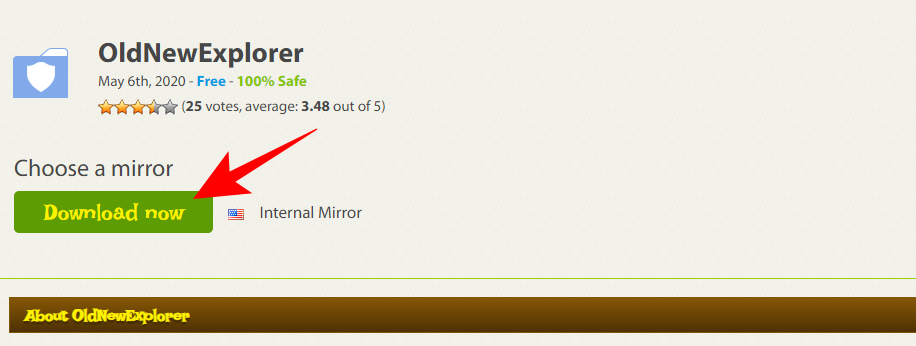
Step 2: Install Ultra UX Theme Patcher
Next, we’re going to install the UltraUXThemePatcher. Simply double-clicking it may not work and Windows will throw up a “Windows protected your PC” message and won’t allow you to run it.
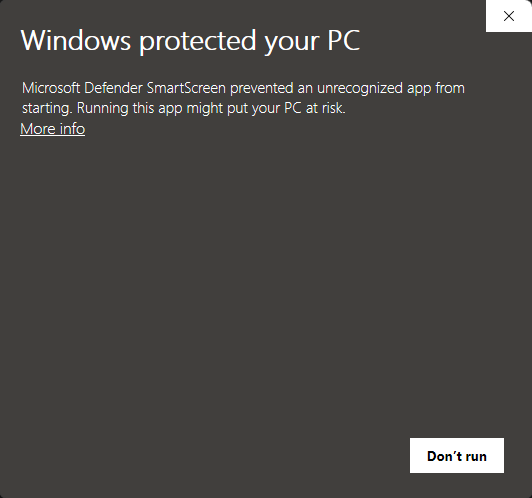
To bypass this, right-click the setup file and click Properties.
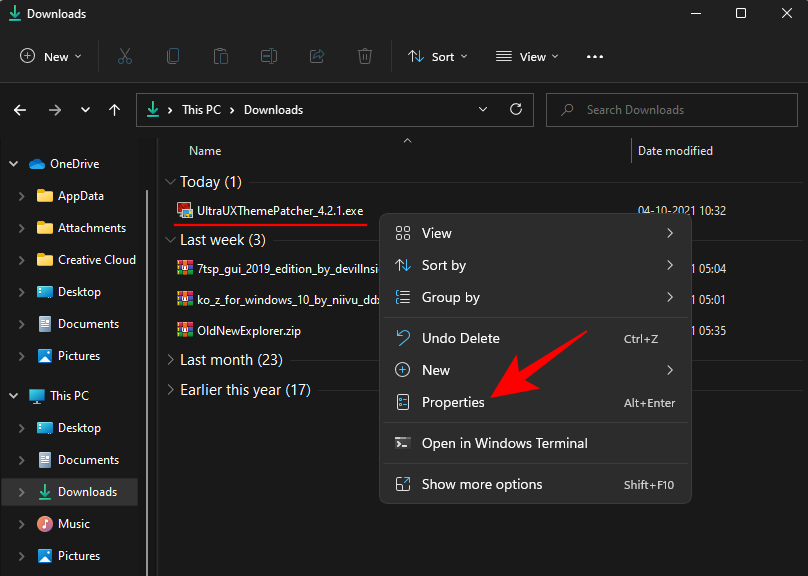
Under the “General” tab, next to “Security” at the bottom, you will see the Unblock option. Make sure there’s a check next to it. Then click OK.
Now you can double-click the executable to run the setup. Go through the on-screen prompts and install UltraUXThemePatcher.
Step 3: Unzip ‘Ko-Z’ zip and Apply Theme
Now go to the folder location where the ‘Ko-Z’ zip file was downloaded. Then unzip it using a file archiver. If you don’t have one, right-click on the file and select Extract all.
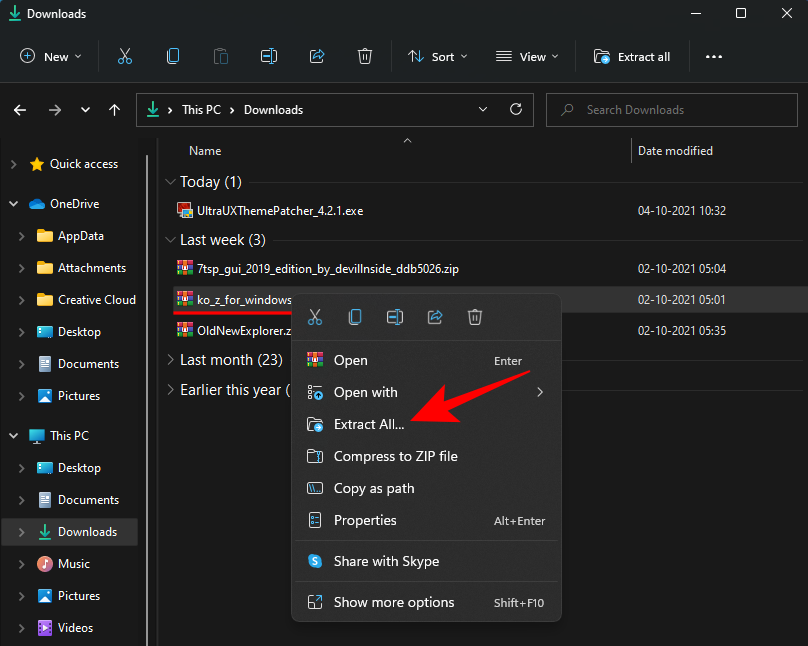
Click on Extract.
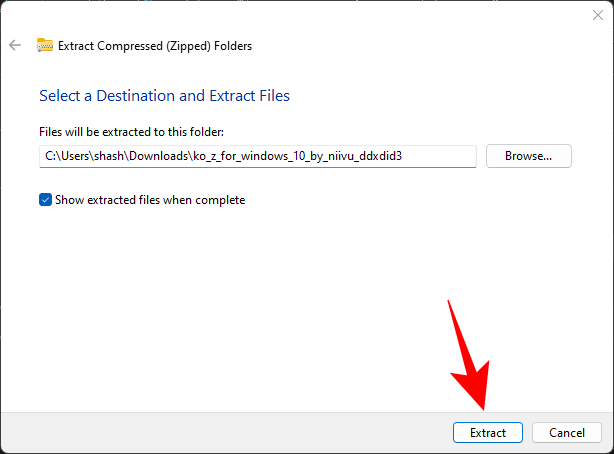
Once the files are extracted, double-click on the ‘ko-Z’ folder.
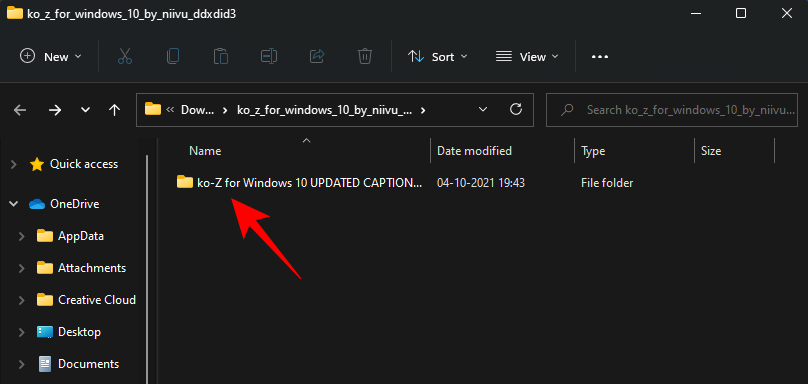
Then double-click on the ‘Windows 10 Themes’ folder.
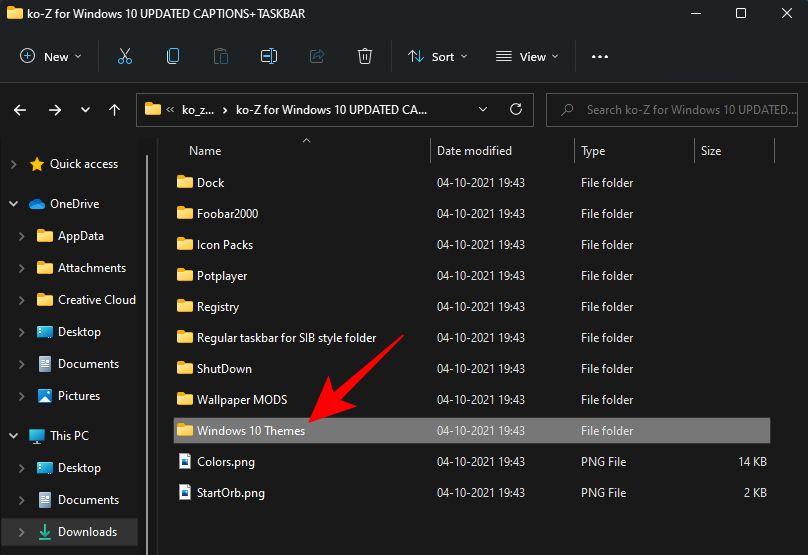
Copy all the files in this folder. An easy shortcut is to press Ctrl + A to select all, and then press Ctrl + C to copy the files.
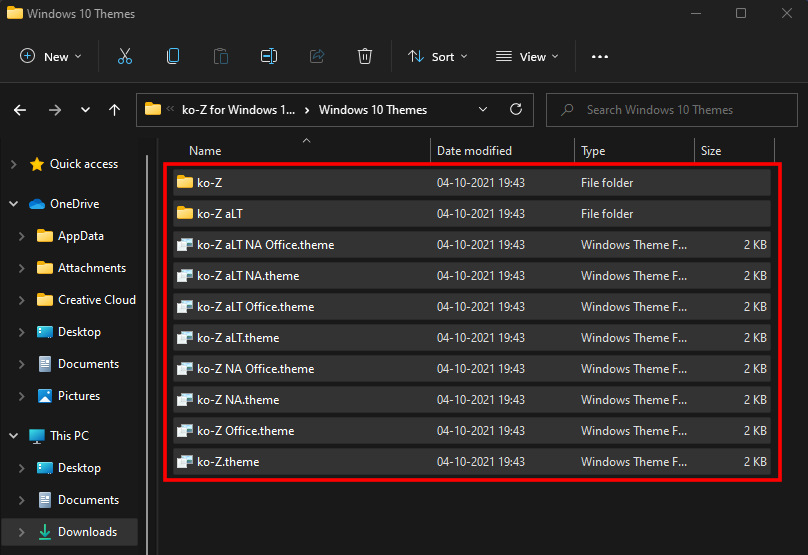
Now navigate to the following address:
C:\Windows\Resources\Themes
Paste the files here (press Ctrl + V). You’ll be asked to provide admission permissions. Check on the box “Do this for all current items”, then click Continue.
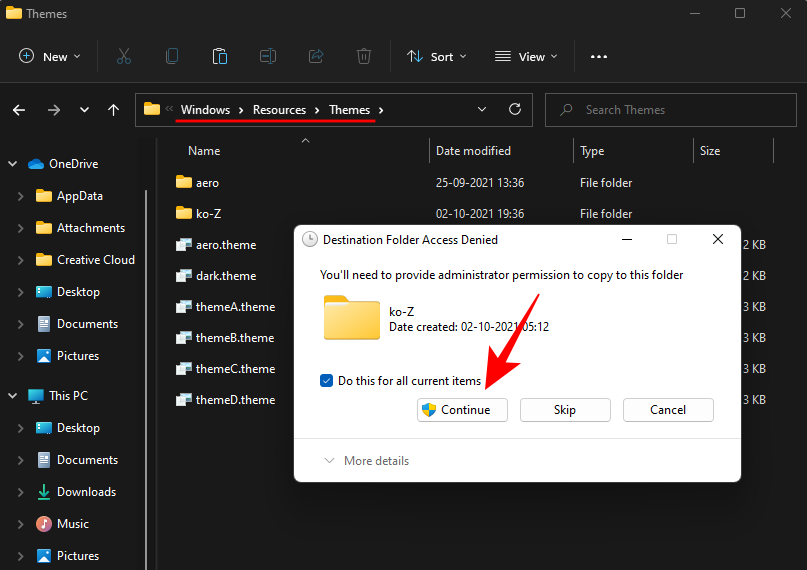
Once the files are pasted, press Win + I to open Settings and click on Personalization in the left pane.
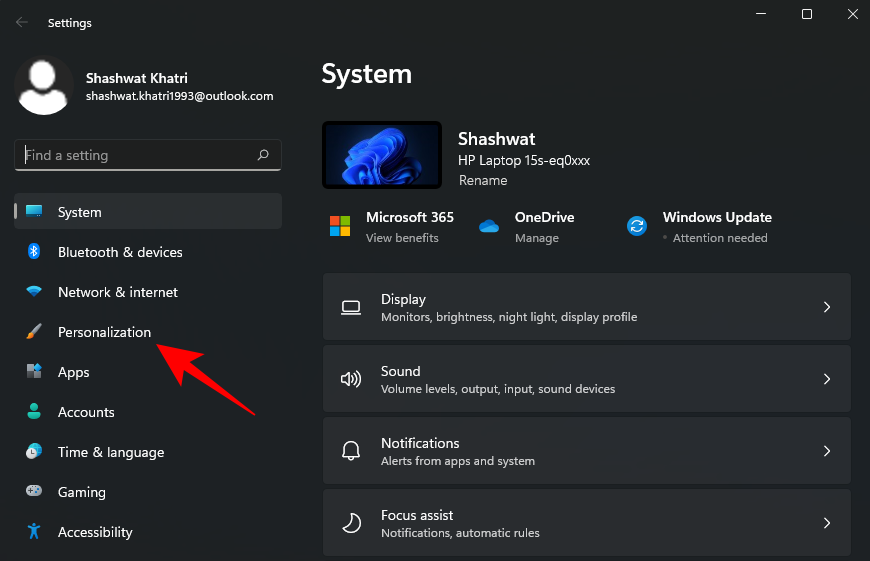
On the right, scroll down and click on Themes.
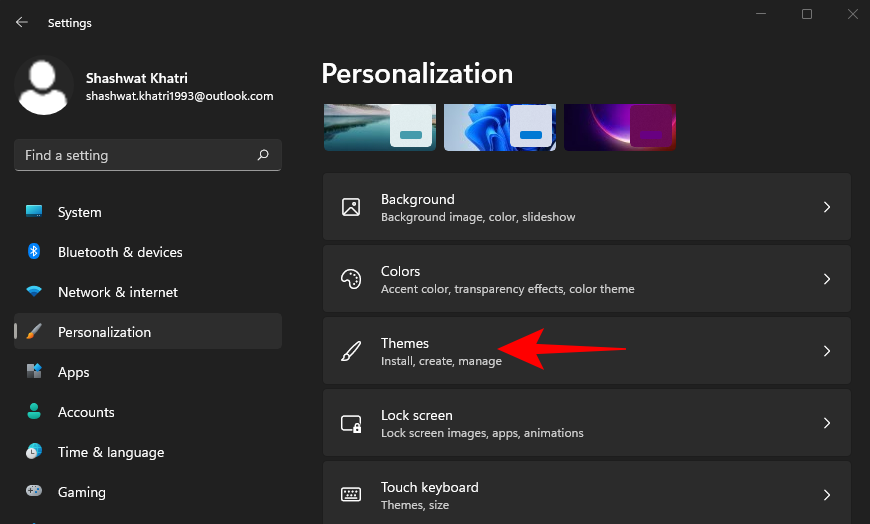
Here, you will see a bunch of themes. But the ones we have copied won’t have a preview. Select the last theme without a preview (this is the main ‘Ko-Z’ theme).
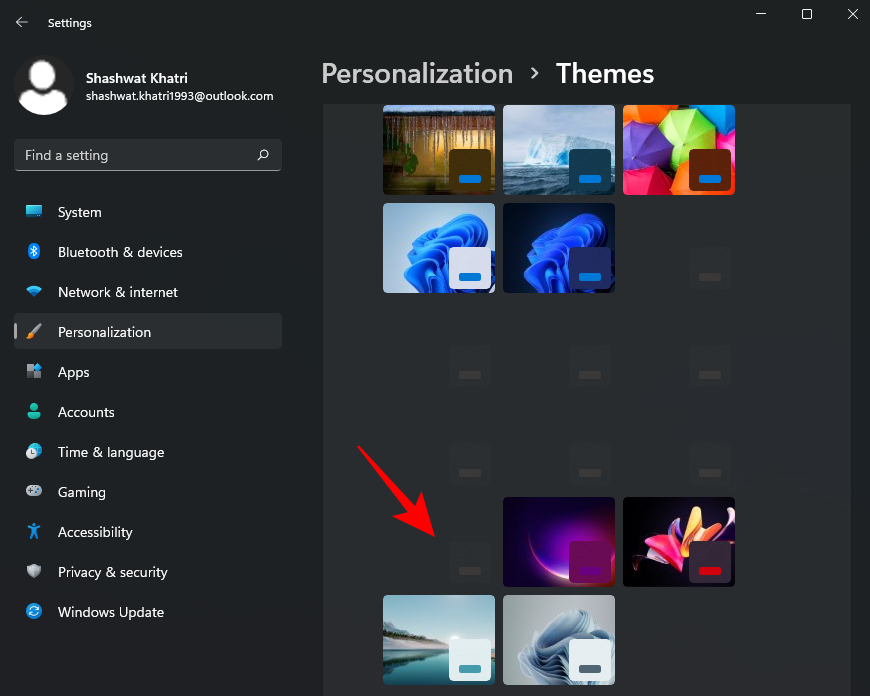
Once the theme is applied, make sure that it says ‘Ko-Z’ next to “Custome theme”.

Step 4: Unzip ‘7tsp GUI’ zip and apply Icons
The icon pack is available in the same ‘Ko-Z’ theme folder that we extracted in the previous step. But we have to make a slight change to make sure it is recognized. So go back to the ‘Ko-Z’ folder and double-click on the ‘Icon Packs’ folder.
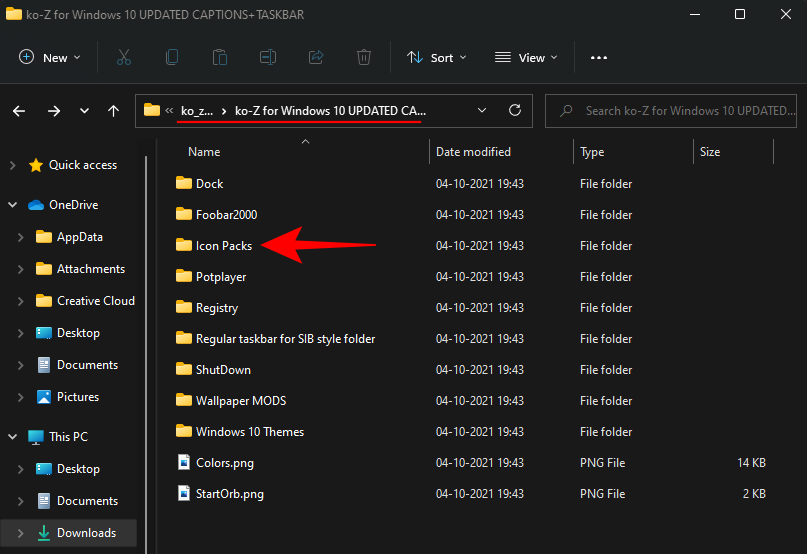
Then go into the ‘7TSP 1903 builds or newer’ folder.
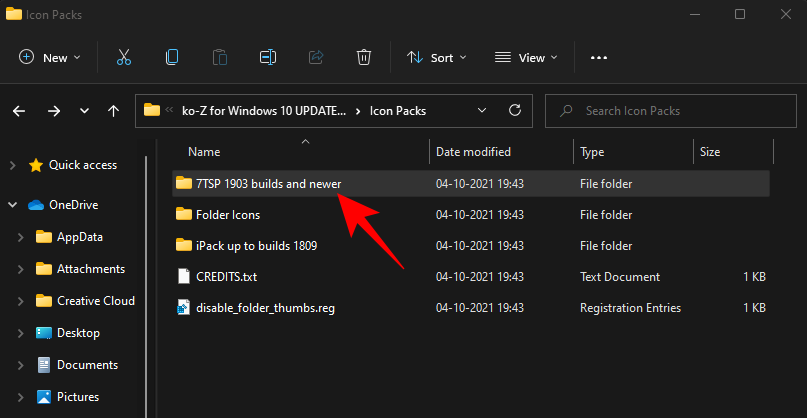
Now right click on the ‘7TSP’ file and click on the rename icon.
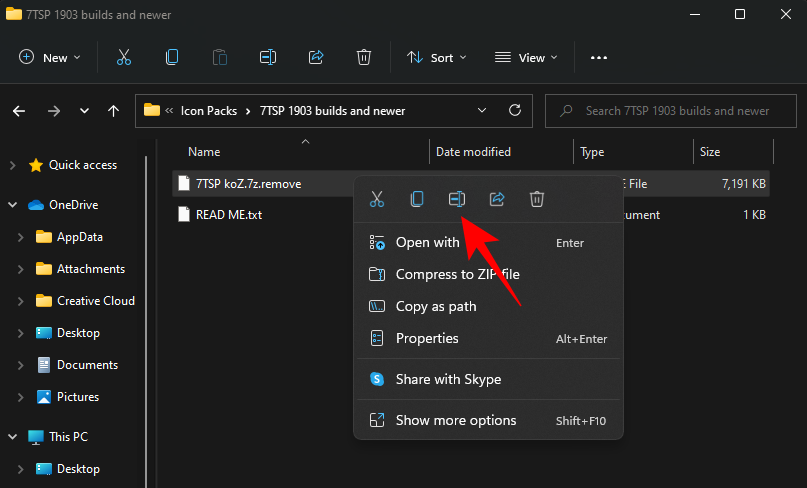
Delete the ‘.remove’ at the end of it and hit Enter. When prompted, click on Yes.
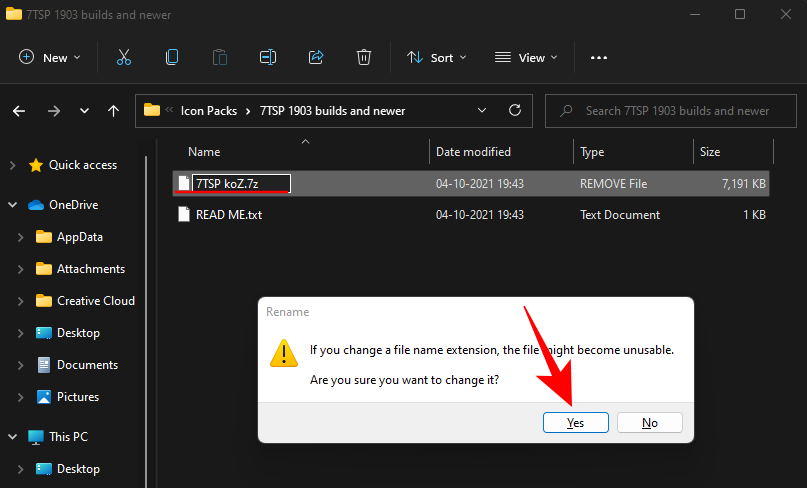
This will turn this into an archive. There’s no need to unzip this file and we will come back to it later. Instead, unzip the previously downloaded ‘7tsp gui’ zip file (use either a file archiver app or right-click on the file and select ‘Extract all’ as shown previously).

Once extracted, right-click on the ‘7tsp GUI’ file and click on rename.
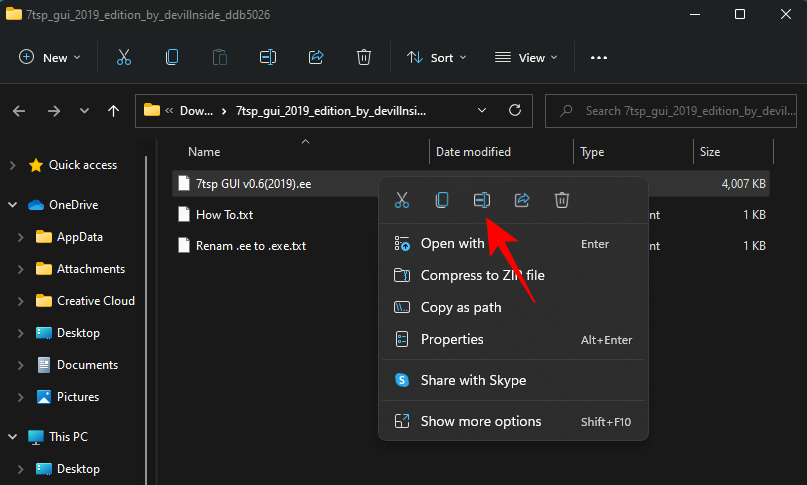
Change the ‘ee’ at the end to ‘exe’, then hit Enter. When asked to confirm, click Yes.
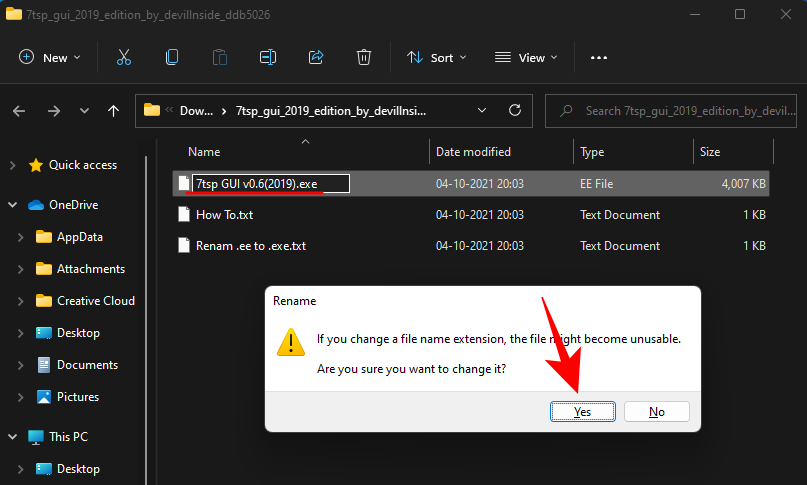
Now run this executable file.
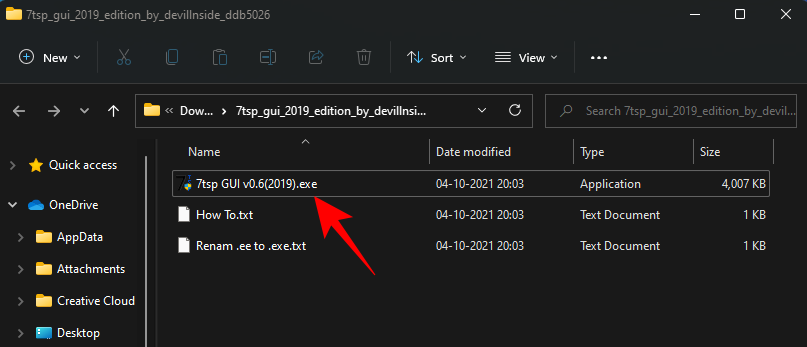
Click on Yes.
This will open the ‘Se7en Theme Source Patcher’. Click on Add a Custom Pack.
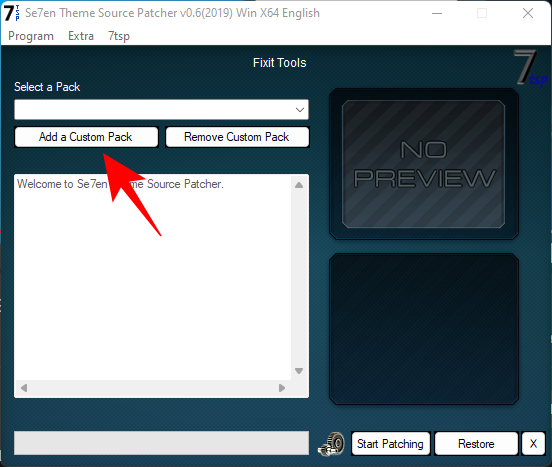
Now navigate to the ‘7tsp’ zip file that we renamed earlier in the ‘Icon Packs’ folder, select it, and click on Open.
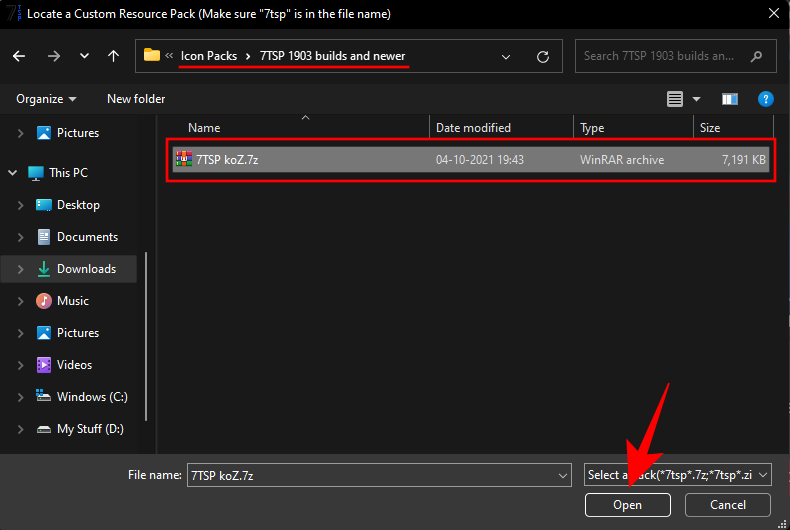
Click on Start Patching.
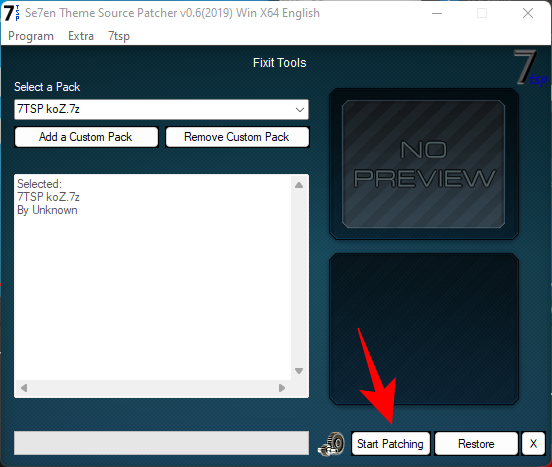
Then click Yes.
You will have to wait quite a while for the process to finish. Once complete, you’ll be asked to reboot your system. Click Yes.
Step 5: Change Registry files to get Folder icons
After the restart, you will see the changes applied to most icons. However, the folder icons would remain the same. That’s because this particular icon pack doesn’t change the thumbnail folder view. To change this, we have to execute a registry fix.
There’s already a file that can do this for you in the ‘Icon packs’ folder within the ‘Ko-Z’ folder that we unzipped earlier. Navigate to it and then double-click on disable_folder_thumbs.reg file.
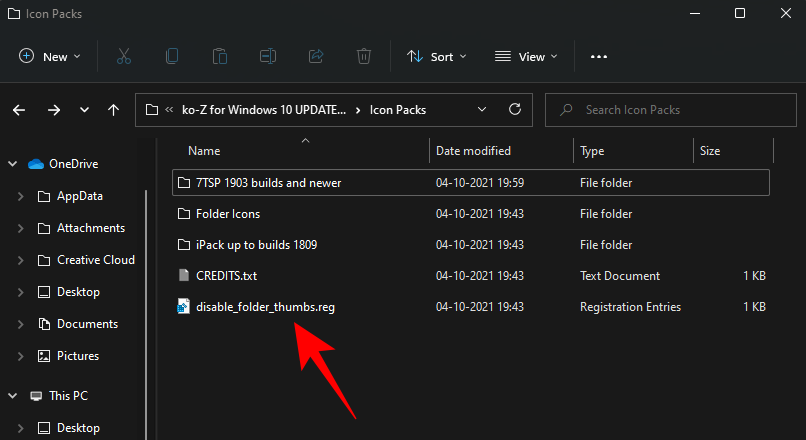
Click on Run.
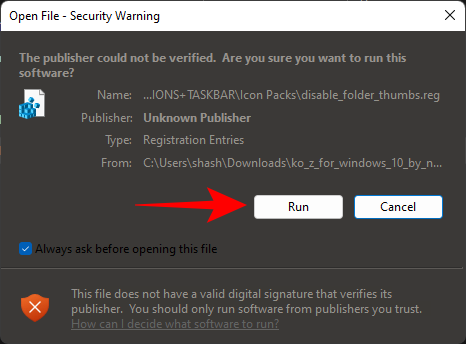
Click Yes.
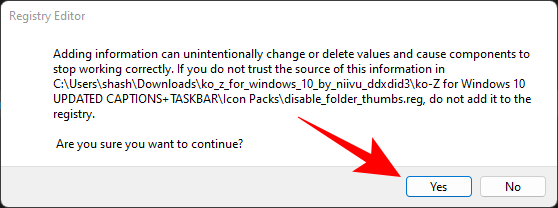
Click OK.

Step 6: Refresh Icons with 7tsp GUI
Run the 7tsp GUI again.
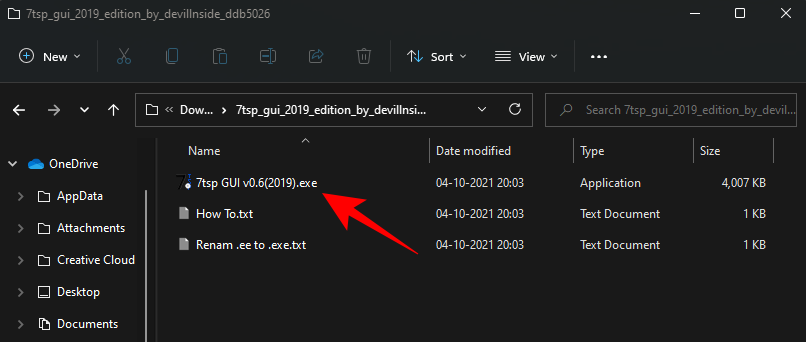
Click on Restore.
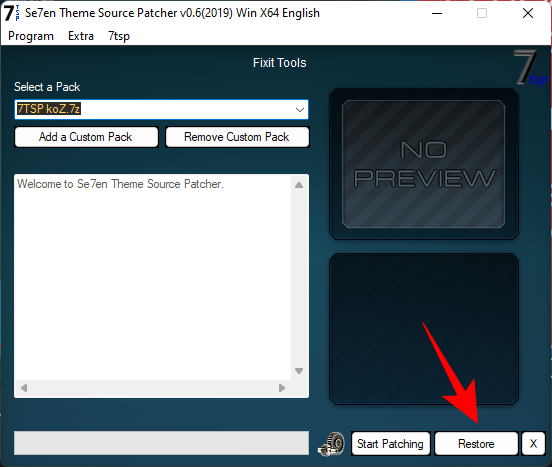
With “Restore modified system files to before 7tsp was used” selected (first option), click on Refresh Icons.
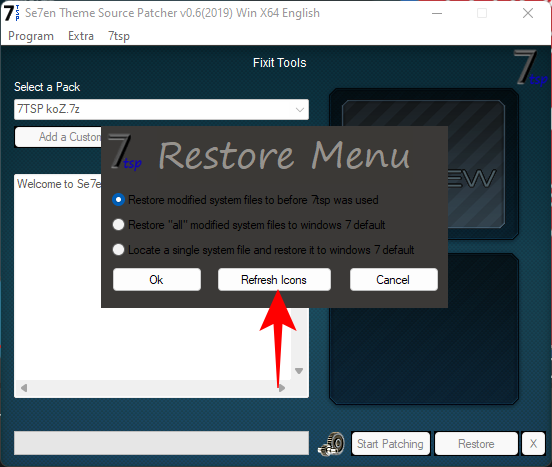
Click on Yes.
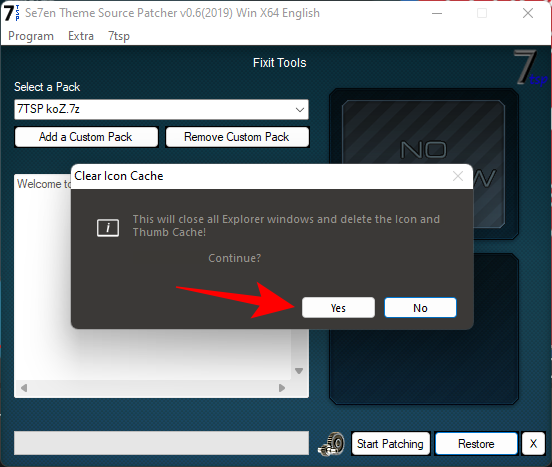
Step 7: Apply Wallpaper
The wallpapers are available in the ‘Wallpaper MODS’ folder inside the ‘Ko-Z’ folder.
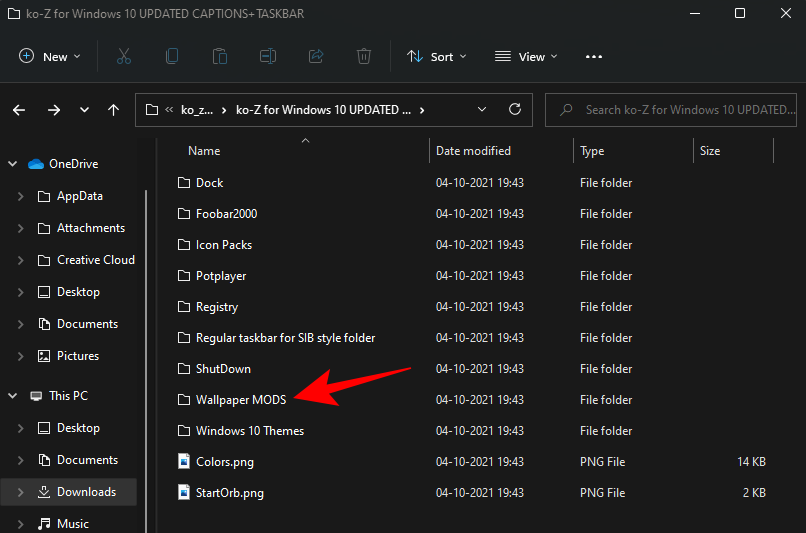
Choose a wallpaper, right-click on it and select Set as desktop background.
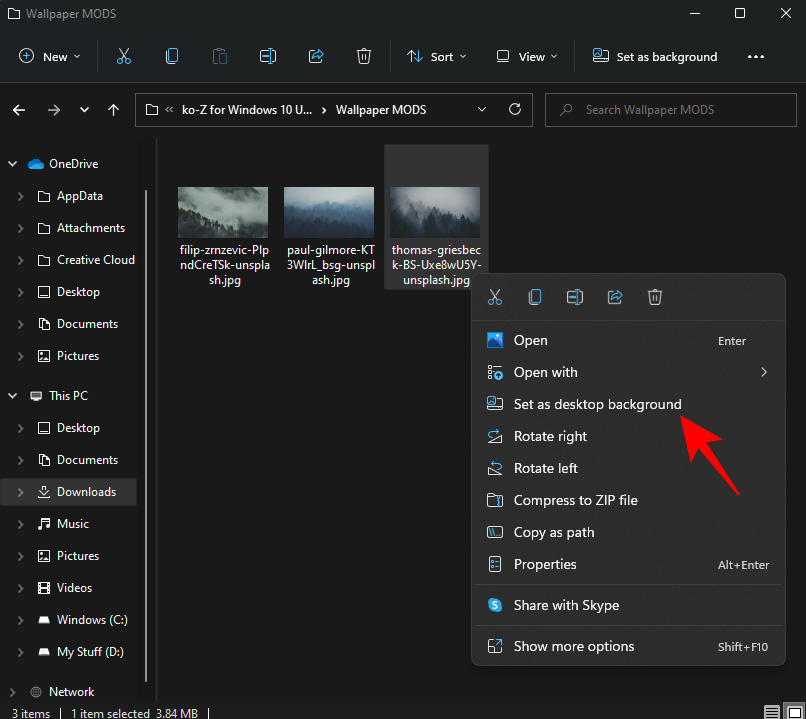
Step 8: Unzip OldNewExplorer
Lastly, we are left with unzipping and applying the old Explorer that we downloaded earlier. Right-click on the OldNewExplorer.zip and select Extract all.
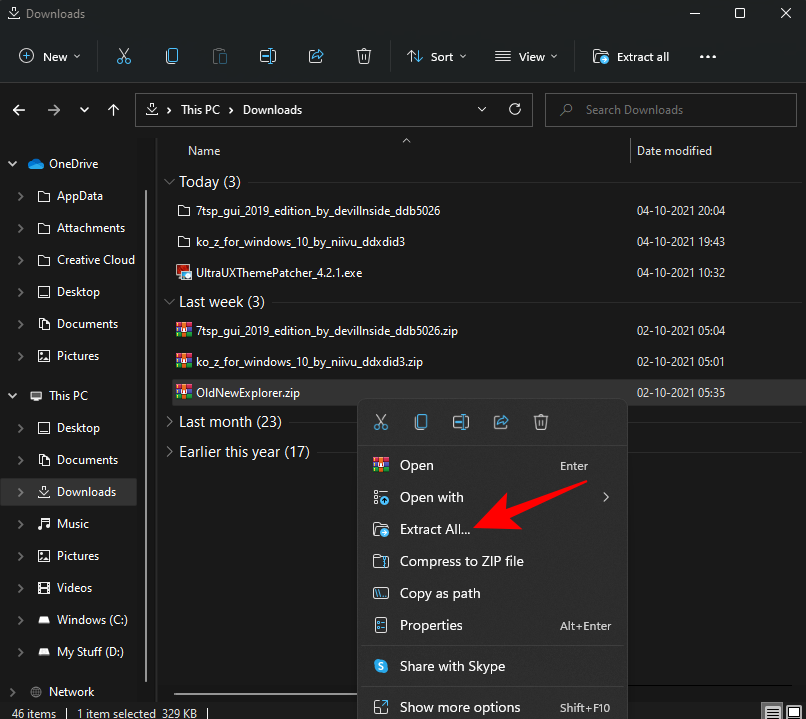
Then click Extract.
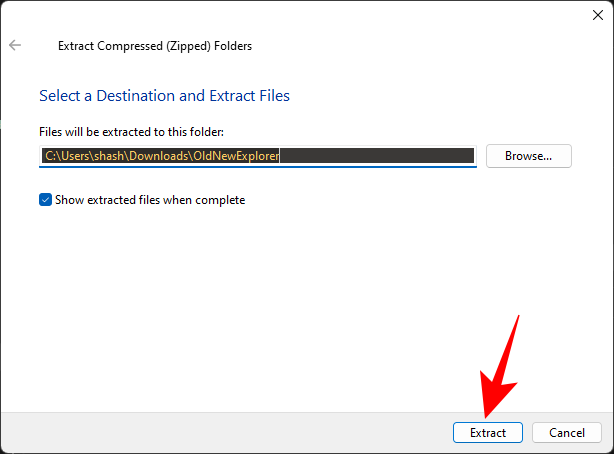
Once the files are extracted, run ‘OldNewExplorerCfg.exe’.
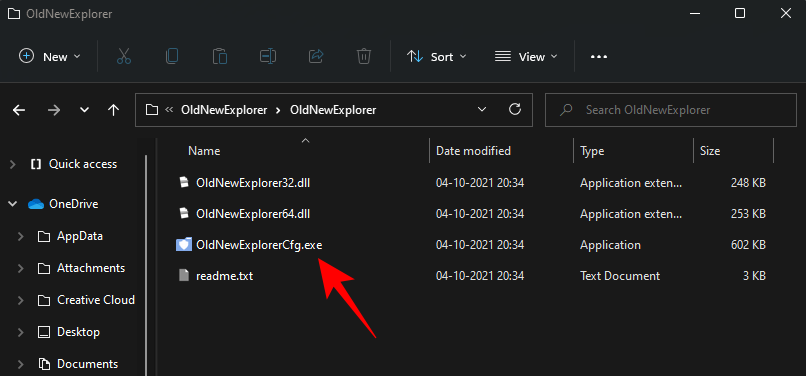
In the OldNewExplorer configuration window, select the following three options under ‘Appearance’:
- Hide caption text in File Explorer windows.
- Hide caption icon in File Explorer windows.
- Hide Up (go to parent folder) button.
Then click on Install.
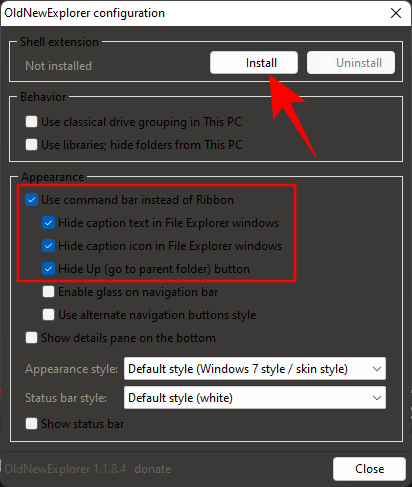
Your Ubuntu theme is now complete.
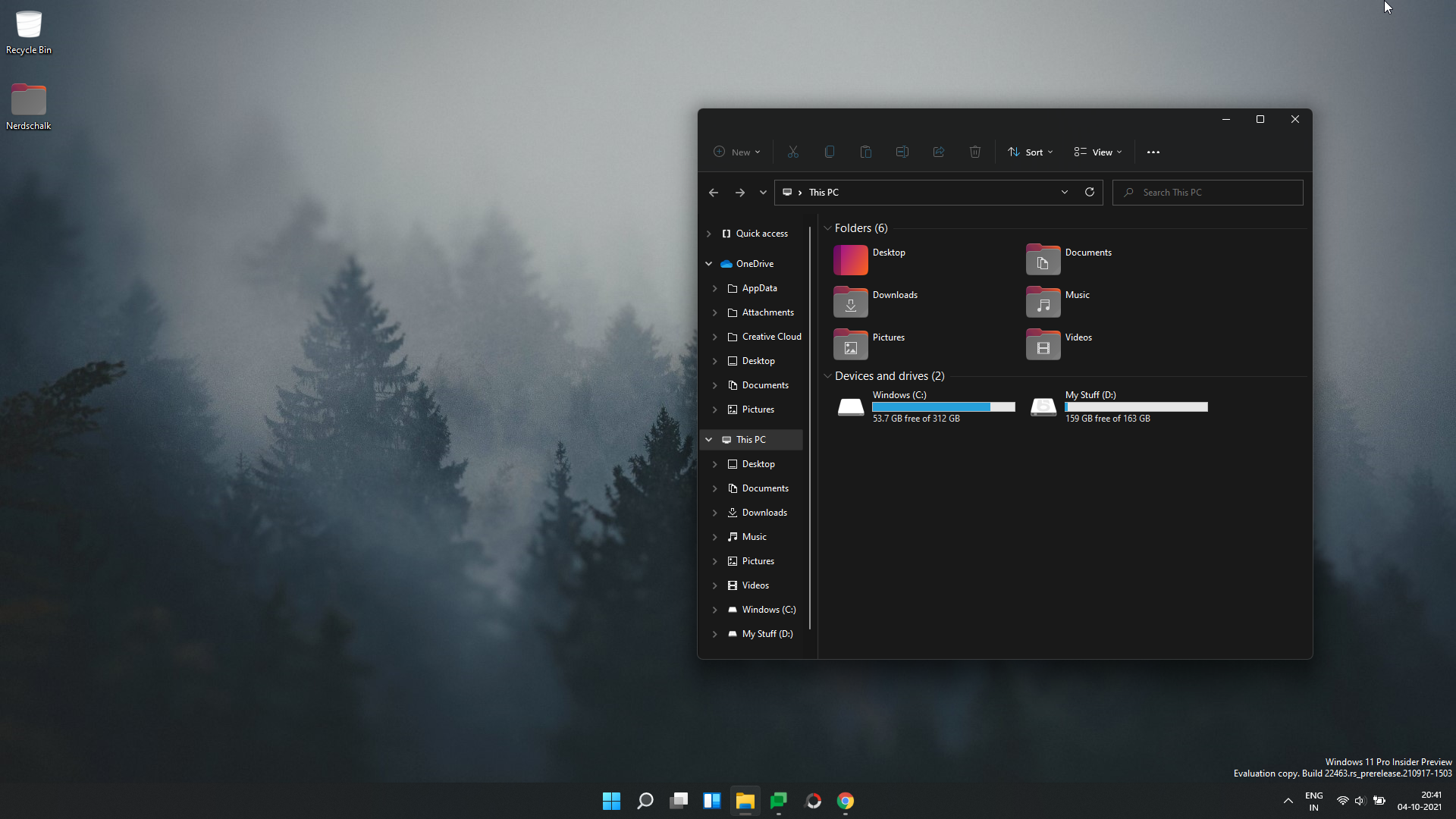
We hope you were able to get the Ubuntu theme on Windows 11 with the help of the guide above.
RELATED
- How to Change Mouse Wheel Behaviour in Photos App in Windows 11
- How to Force Quit a Program on Windows 11
- How to Find Computer Name on Windows 11
- Where is ‘My Computer’ on Windows 11? How to Find ‘This PC’ Easily
- How to Extend Volume Windows 11 or Windows 10
Making Windows 11 look like Ubuntu can be a fun and creative process that merges the best of both worlds: the unique aesthetic and user experience of Ubuntu with the robustness and familiarity of Windows 11. This transformation can enhance user experience, particularly for those who use both systems or wish to embrace a more open-source environment without completely switching their primary operating system.
Understanding the Ubuntu Aesthetic
Before diving into the transformation process, it’s essential to understand what elements of Ubuntu’s design you are aiming to replicate. Ubuntu, especially in its latest versions like Ubuntu 22.04 LTS, is known for:
- Clean and Modern UI: With elements like rounded corners, a consistent color palette, and modern fonts.
- Dock: A taskbar-style dock located on the left side of the screen featuring application shortcuts.
- Window Management: Minimalistic title bars and the use of translucent effects.
- Icons: A distinct icon set that is colorful and flat.
- Dark and Light Themes: Ubuntu offers both dark and light themes, which can be appealing to different users’ preferences.
Step 1: Customize the Windows 11 Taskbar
One of the most significant departures from Ubuntu is how the taskbar is designed. Since Ubuntu features a dock similar to macOS, customizing the Windows 11 taskbar to look more like that is your first step.
1. Move the Taskbar to the Left
- Right-click on the taskbar and select “Taskbar settings.”
- Scroll down to “Taskbar behaviors.”
- Change the “Taskbar alignment” from Center to Left.
This simple move gives you an initial Ubuntu-like look.
2. Install a Dock Application
- To truly mimic Ubuntu’s dock, consider installing a third-party application like RocketDock or Winstep Nexus.
- These applications allow for more customization and positioning.
- Set the dock to be located on the side (left) of the screen, similar to Ubuntu.
Step 2: Change the Icons
Ubuntu has a distinct set of icons that contribute to its unique look. You can download icon packs that replicate these styles.
1. Download an Icon Pack
- Websites like GNOME-Look and DeviantArt feature Ubuntu-like icons. Look for packs such as “Yaru” or “Papirus.”
2. Install the Icon Pack
- Once downloaded, extract the files.
- Right-click on the desktop and select “Personalize” > “Themes.”
- Under “Icons,” browse for the downloaded icon set and apply it.
Step 3: Change System Fonts
Ubuntu uses the Ubuntu font, which is modern and easy to read. To replicate this:
1. Download the Ubuntu Font
- You can download the Ubuntu font from the official Ubuntu website or Google Fonts.
2. Install the Font
- Extract the font files and right-click to install them.
- Go to “Settings” > “Personalization” > “Fonts” and apply it as your system font.
Step 4: Apply a Similar Theme
Windows 11 offers built-in themes, but to match Ubuntu’s aesthetic closely, you need to download a custom theme.
1. Find a Windows 11 Theme
- Look for themes that closely resemble Ubuntu through resources like ThemeForest or DeviantArt.
2. Install the Theme
- Extract the contents and place them in the C:WindowsResourcesThemes folder.
- Right-click on the desktop and select “Personalize” to change the theme.
3. Adjust Colors
- Go to “Settings” > “Personalization” > “Colors” to adjust accent colors that resemble Ubuntu’s orange and light gray palette.
Step 5: Use a Terminal Emulator
To have the full Ubuntu experience, consider replacing Command Prompt or PowerShell with a terminal that emulates Ubuntu’s terminal.
1. Install Windows Terminal
- Download Windows Terminal from the Microsoft Store.
2. Customization
- Set the background color to dark, change the profile to Ubuntu, and configure transparent effects as required.
3. Adding WSL (Windows Subsystem for Linux)
- To make it even closer to Ubuntu, add Windows Subsystem for Linux (WSL) and set up Ubuntu as a distribution.
- Run
wsl --installin PowerShell to enable WSL and install Ubuntu.
Step 6: Change System Sounds
Ubuntu provides a unique sound profile. Adjust the sounds on Windows 11 to mimic Ubuntu as closely as possible.
1. Download Ubuntu Sound Pack
- Various websites offer Ubuntu sound packs. Search for a reliable source.
2. Set System Sounds
- Go to “Settings” > “System” > “Sound” > “Advanced sound options.”
- There, you can change the notification sounds to match those of Ubuntu.
Step 7: Install Gnome-like Applications
To complete the Ubuntu experience, replace some of your Windows programs with their Ubuntu equivalents or find similar alternatives.
1. Download Alternatives
- File Management: You might install
NemoorThunarto closely replicate Ubuntu’s file management system. - Text Editing: Use
Gedit, or for code editing,VS Codecan be styled to look likeGeany. - Image Viewer: Applications like
GpicViewcan replace the default viewer.
Step 8: Customize Your Wallpaper
Choosing the right wallpaper can significantly enhance your overall look.
1. Download Ubuntu Wallpapers
- Search for “Ubuntu wallpaper” in image resources to find the best one that fits your aesthetic.
2. Set the Wallpaper
- Right-click on the desktop, select “Personalize” > “Background” and apply your chosen wallpaper.
Step 9: Final Touches
For the last step, pay attention to details that can elevate the Ubuntu resembling interface.
- Disable Unused Features: Turn off unnecessary transparency and animations from settings.
- Adjust Widget and Font Sizes: Set them to medium or large based on your preference.
- Install Cursor Packs: Search for Ubuntu-like cursor packs, and apply them through “Mouse properties” in settings.
Conclusion
By following the steps outlined above, you can effectively transform Windows 11 to resemble Ubuntu both visually and functionally. This customization not only provides a fresh look but can also enhance productivity by bringing the visually appealing and modern features of Ubuntu to your primary operating system.
Additional Tips
- Regularly check for updates on the customization packs you’ve installed to ensure they work seamlessly with Windows updates.
- Experiment with various settings — find what feels comfortable for you, as personal preferences can enhance user experience significantly.
Whether you’re a developer, designer, or casual user, making Windows 11 look like Ubuntu can make your working environment more enjoyable and tailored to your preferences, embodying the spirit of Ubuntu while retaining the functionality of Windows 11.
Are you a Windows user who’s decided to switch to Linux? But, maybe your work or your favorite game wants you to use Windows.
Compared to Linux, Windows doesn’t provide a lot of customization options. But that doesn’t mean you can’t tweak it to make them look better.
There are a lot of third-party applications that claim they can change how Windows look. But most of them either aren’t stable or can break your Windows. Read further on how you can make windows look like Linux in the safest possible way.
Make Windows Look Like Linux
Turn Windows Into Linux (Paid Version)
Deviantart has lots of themes designed for all versions of Windows that look a lot like Linux. They have a detailed guide on how to install it.
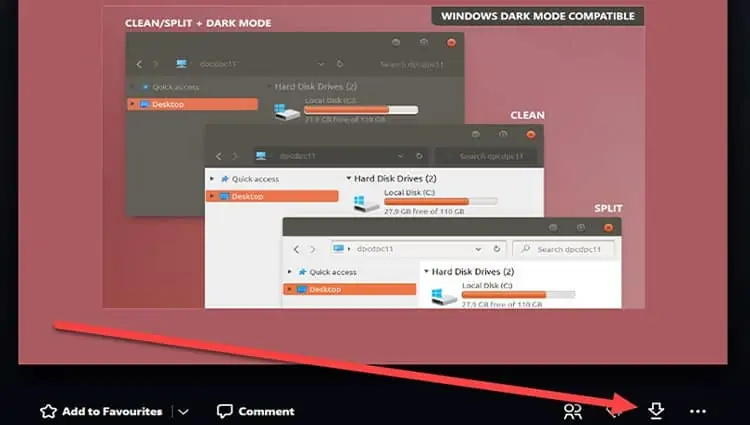
Turn Linux Into Windows (Free Version)
If you are looking for a free alternative, then it becomes a little complicated. You would have to piece together bits from different places. Also, the internet is full of fake applications on this topic. So you never know if you are going to break your Windows trying to force a modification.
Windows doesn’t provide a lot of flexibility in modifying its default settings. So we would need to make do with what is available for us. For example, you cannot change the system font in Windows. And, the taskbar has no customization whatsoever.
A lot of times, there is no choice but to consider third-party applications. They may not integrate well with the system and not quite what you want. I have compiled online resources into different sections. Each section tackles one aspect of customization.
Customizing to look like Linux is a very broad topic. No two Linux distributions look the same. So we will stick to customizing Windows to look like the default Ubuntu.
Change Mouse Cursor
- Down Ubuntu Cursors.
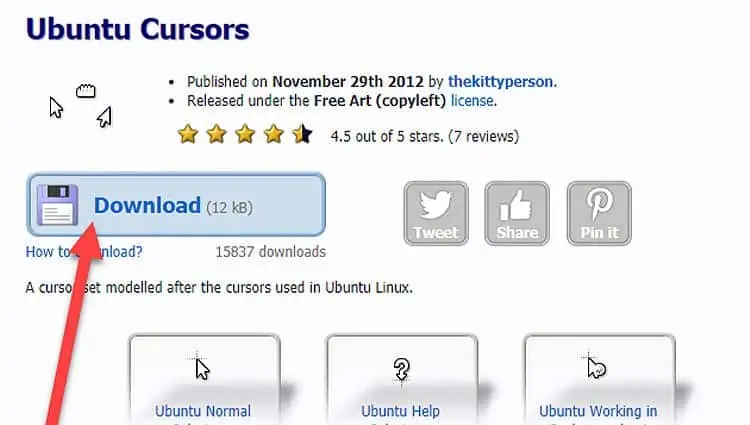
- Once the download completes, go to the Downloads folder.
- Click on the downloaded file and select extract all.
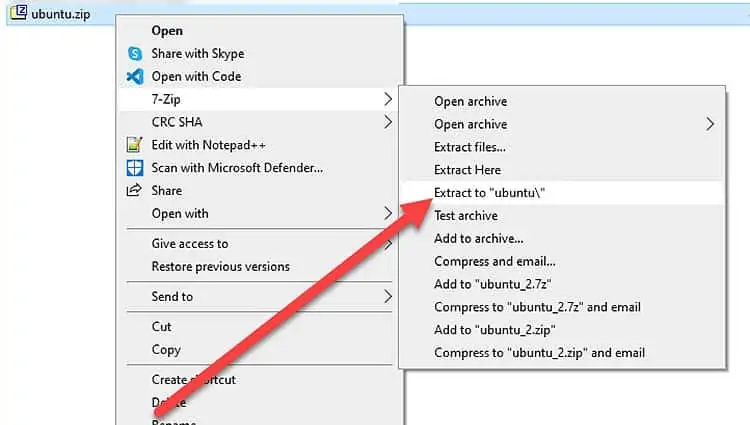
- Click on Start Menu and type Mouse settings to bring up a new window.
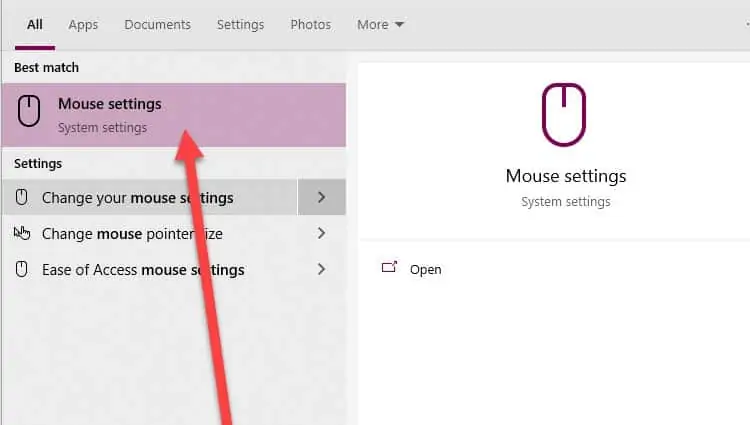
- Under Related settings, select Additional mouse options.
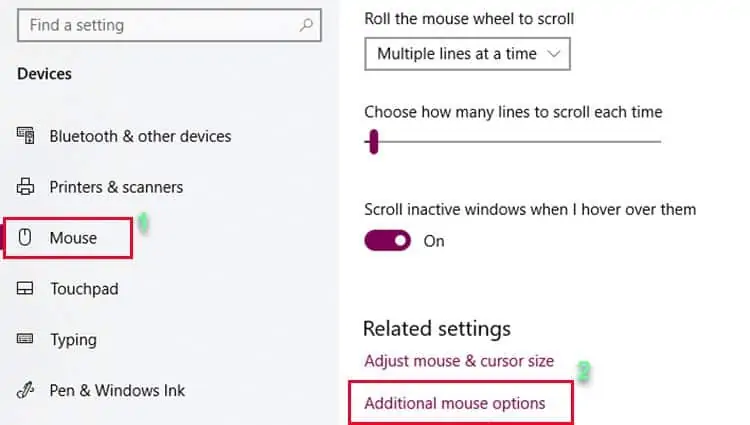
- Go to the Pointers tab.
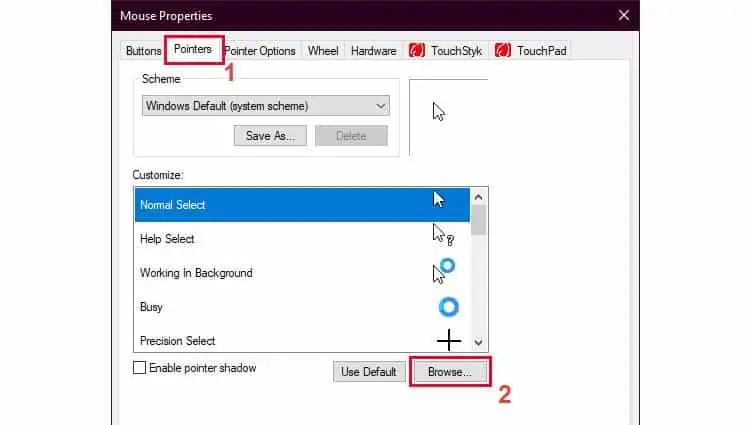
- With Normal Select selected, click on Browse.
- Head to the newly extracted folder from Step 3.
- Select Ubuntu Normal cursor file and click Open.
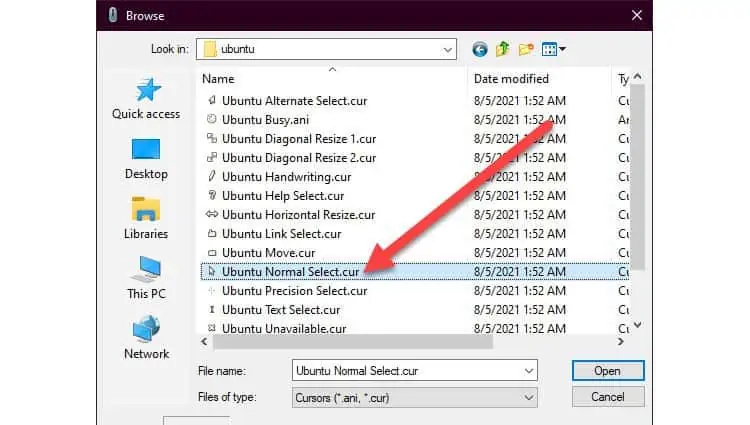
- Select Apply. The mouse cursor should now change.
- Repeat Steps 7-9 for all cursor types.
- Select OK.
Change Accent Color
- Right-click on Desktop and select Personalize.
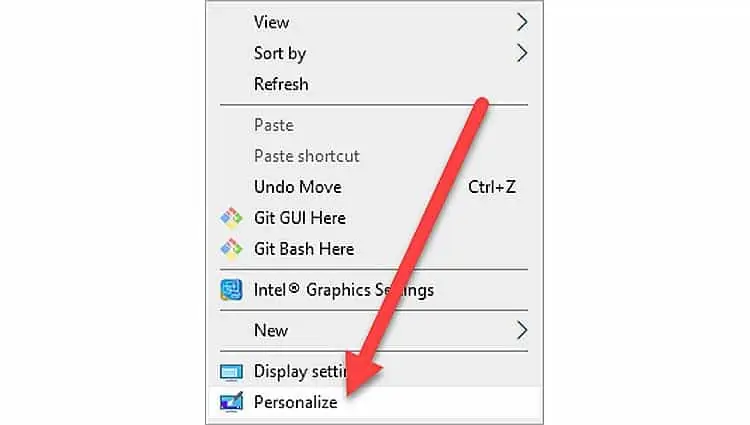
- Click on Colors.
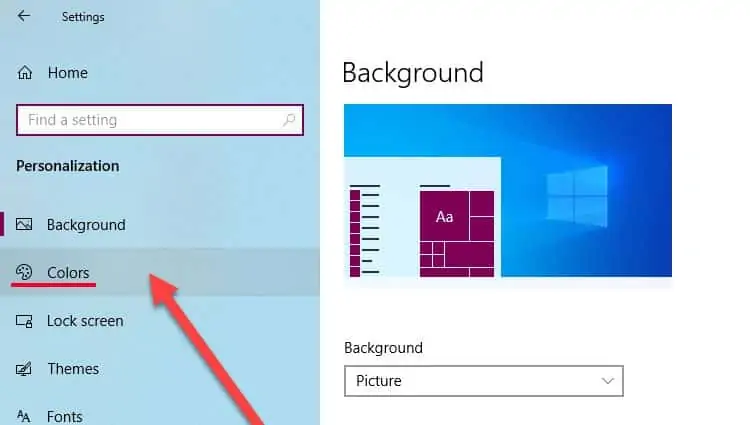
- Enable Transparency effects if not already enabled.
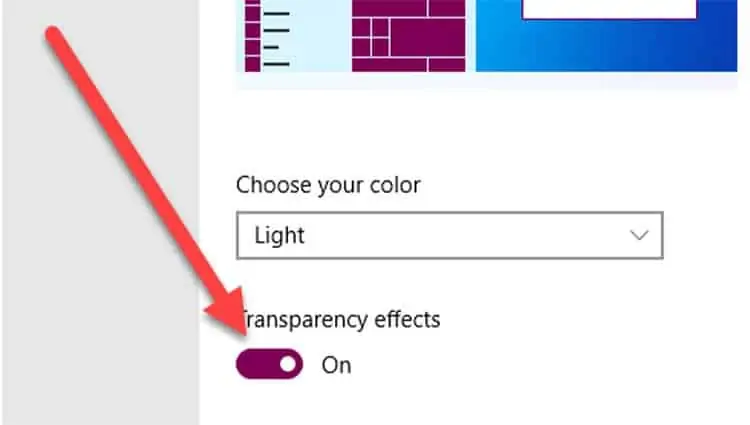
- Scroll down to colors and select Custom color.
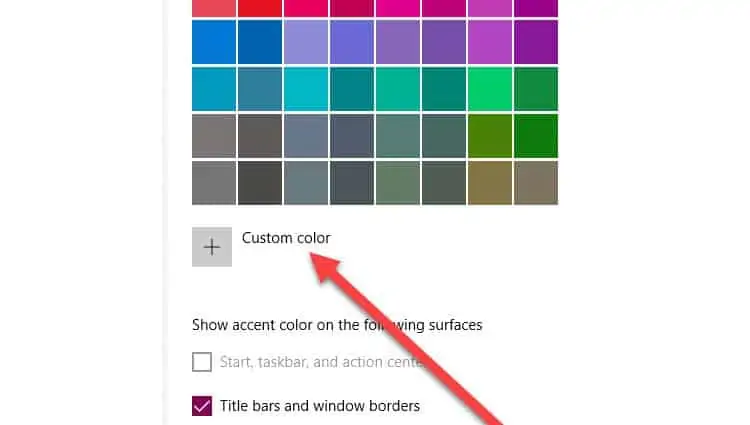
- Select More.
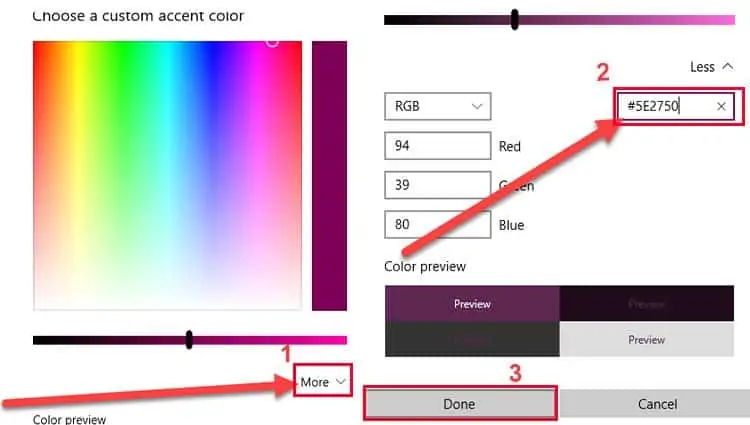
- Enter #5E2750 as the hex color code and select Done. This is the code for dominant color used in Ubuntu according to their official website.
Hide Desktop Icons
- Right-click on Desktop and Go to View.
- Under Expanded View, click on Show Desktop Icons to uncheck it.
- The desktop icons should disappear. To get them back, repeat steps 1 and 2. You can also hide recycle bin only.
Hide the Taskbar
- Go and grab Taskbar Hider application. Windows 10 doesn’t have a built-in way of hiding the taskbar permanently so we’ll install this instead. Select 32 bit or 64 as needed.
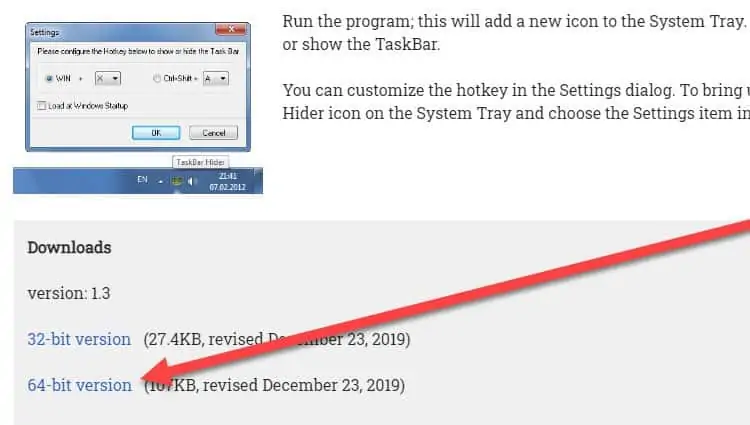
- Once downloaded, extract the application to the Downloads folder.
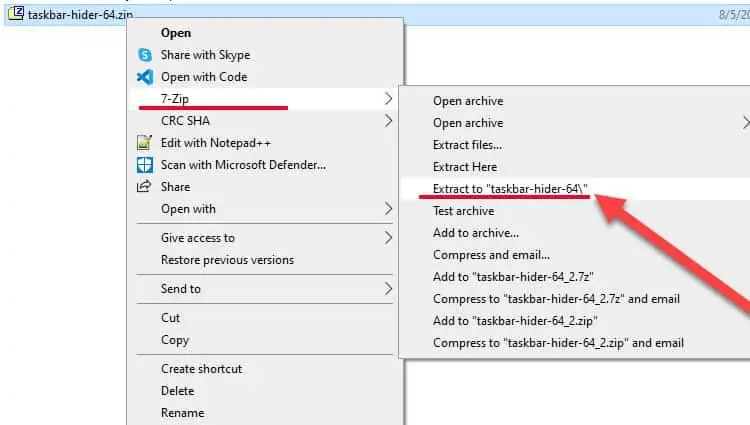
- Open Powershell or Command Prompt (Press Windows Key + X).
- Go to this location by typing
cd Downloads - Type
TaskBarHider.exe -hide -exit. This will hide the taskbar.
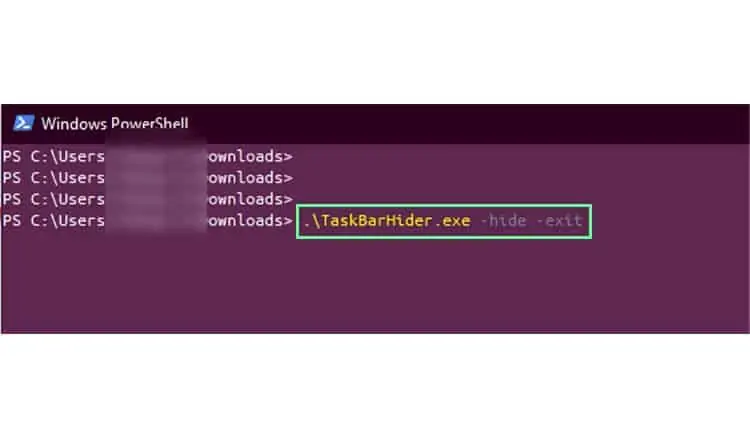
- If you need to get it back, type
TaskBarHider.exe -show -exit.
Change Powershell Font
- Download Ubuntu fonts.
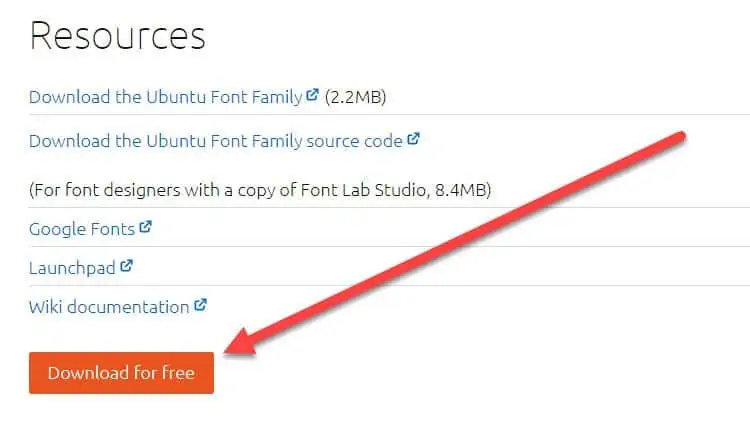
- Extract to Downloads folder.
- Right-click on Desktop and select Personalize.
- Select Fonts from the left navigation pane.
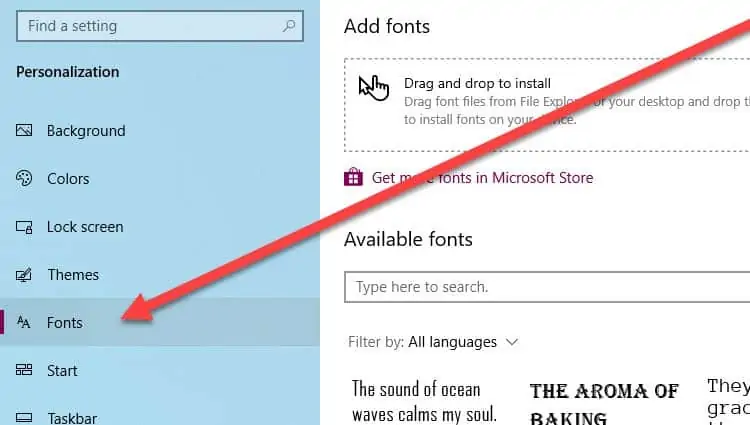
- Open the folder you extracted from Step 2.
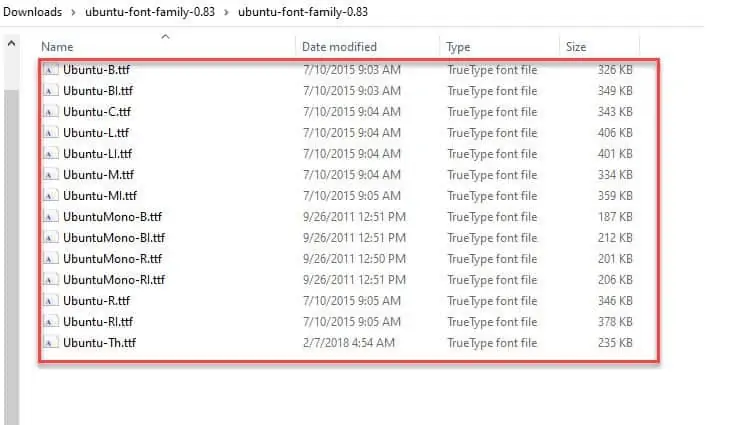
- Select all fonts and Drag and Drop them to the Fonts window. Wait until they finish installing.
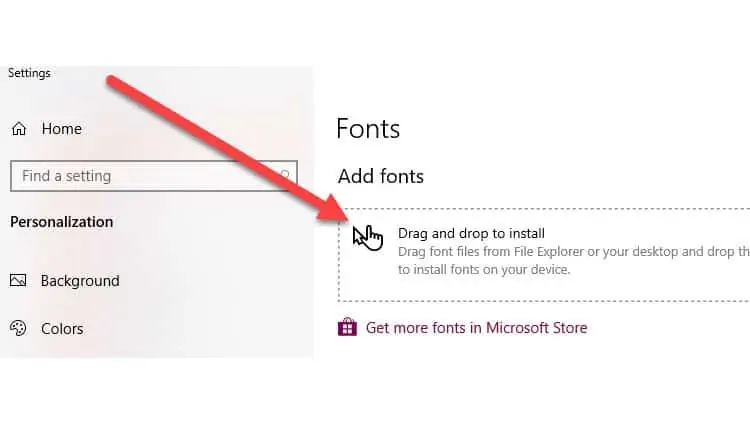
- Open Powershell.
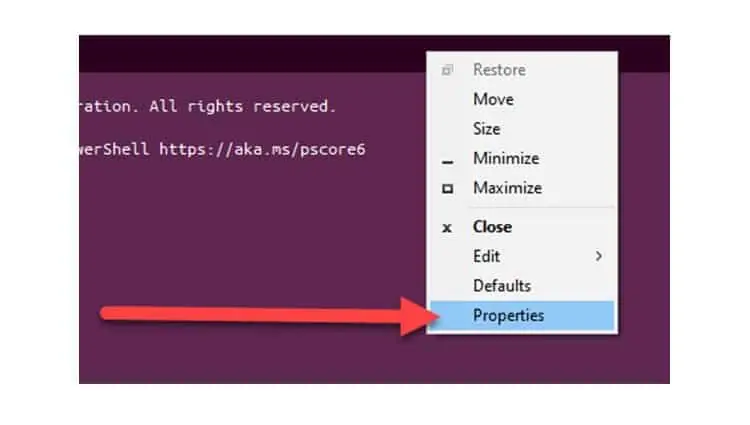
- Do a Right-click on the window bar and select Properties.
- Select Font tab.
- Scroll and select Ubuntu Mono from the font list.
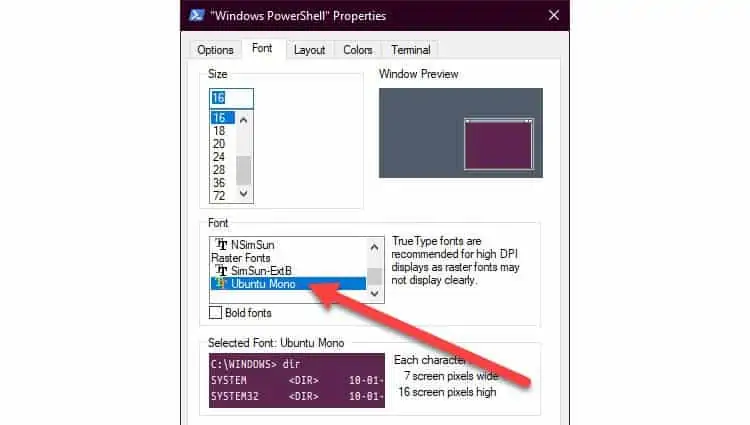
- Increase Size if needed.
- Click on OK.
Change Powershell Colors
- Open Powershell.
- Do a Right-click on the window bar and select Properties.
- Select Colors.
- Select Screen Text and click on the White palette.
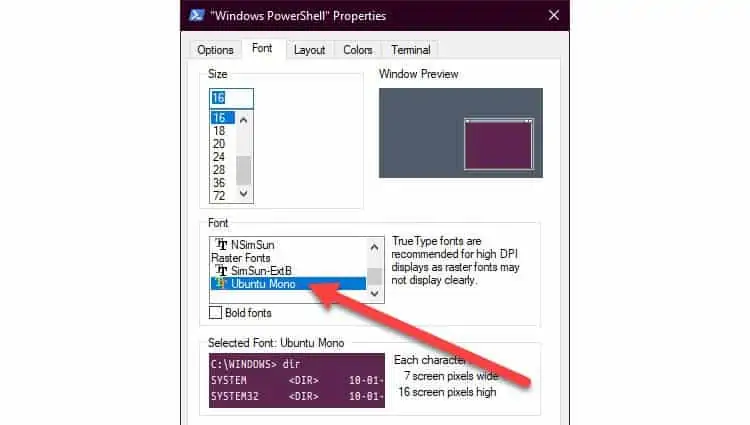
- Select Screen Background.
- Under the Red, Green and Blue values, enter 94, 39, and 80 respectively. This gives you the official color palette of Ubuntu.
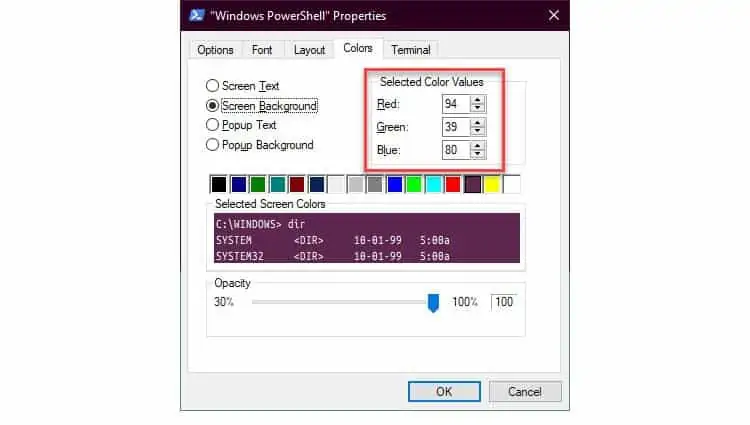
- Click on OK.
Install Launcher
- Download Linkbar.
- Once complete, extract to the Downloads folder.
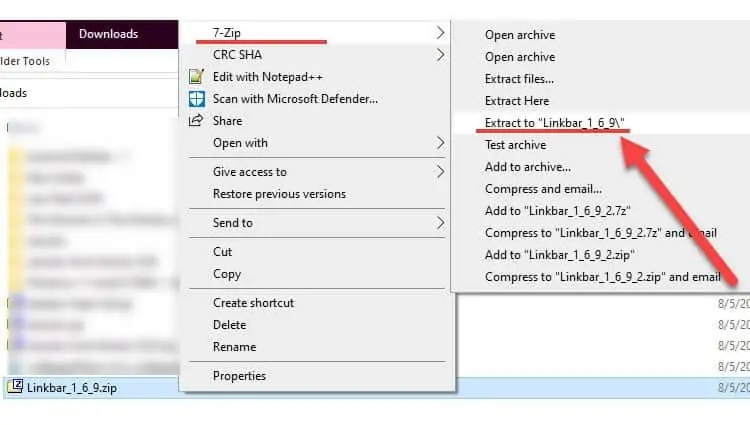
- Open the extracted folder and open LinkBar64.exe or LinkBar.exe(32bit).
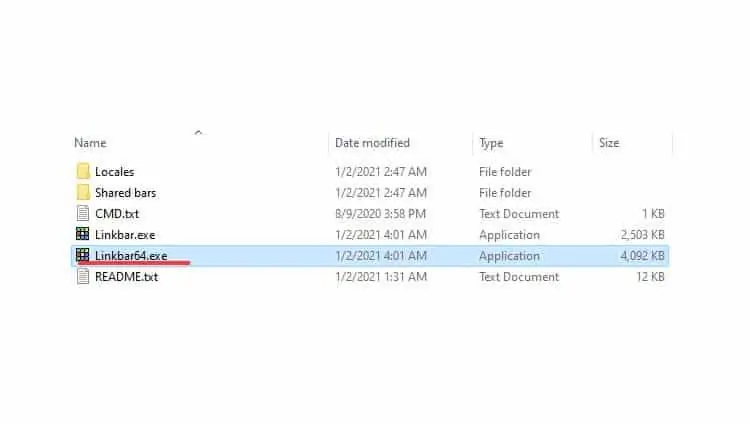
- Linkbar now appears on the left side of the screen. Right-click on it and select Settings.
- Make sure the Style is set to Accent to match the Windows color scheme.
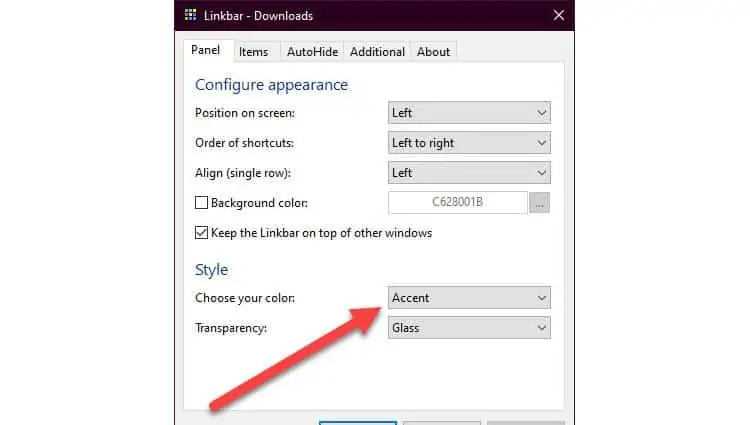
- To add a launcher, right-click on Linkbar again and select Shortcut from New.
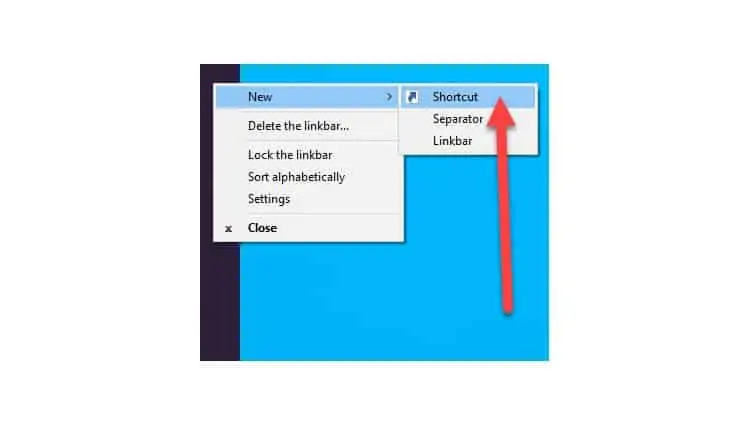
- Click on Browse.
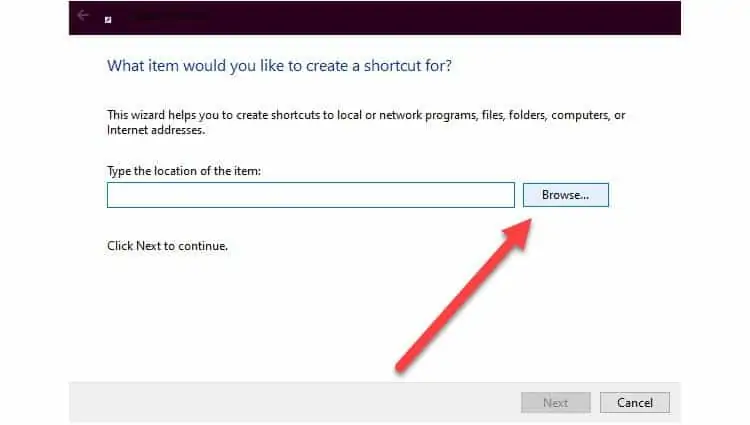
- Open a Folder location or browse to the application you want.
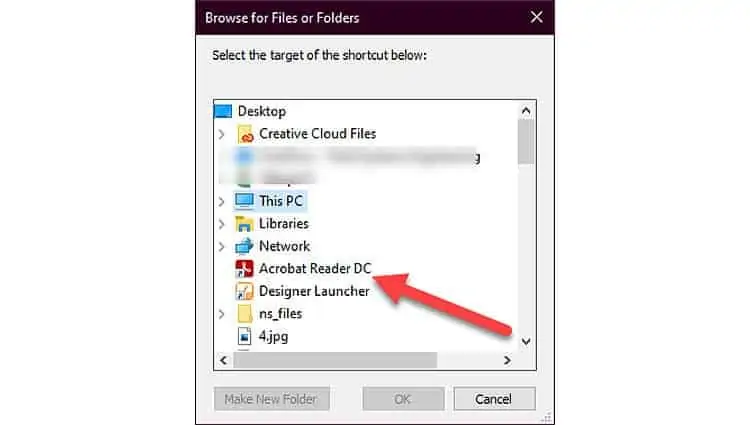
- Select OK.
- Click Next.
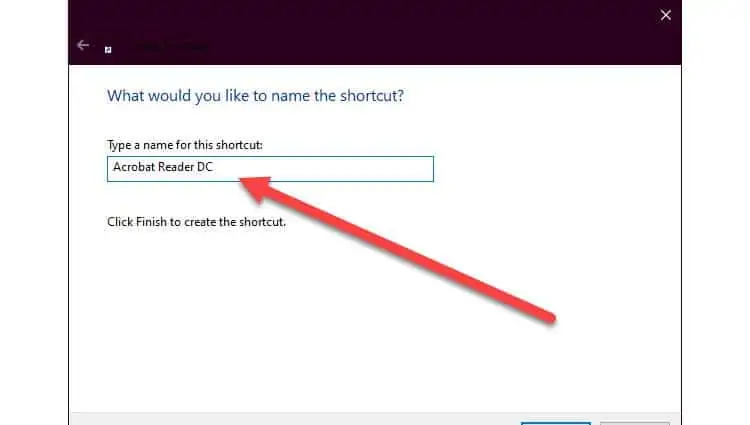
- Type name of new launcher and select Finish.
Download Wallpaper
- Get a Ubuntu wallpaper.
- Go to the Downloads folder and do a right-click on it.
- Select Set As Desktop Background. Dark wallpapers might work well too.
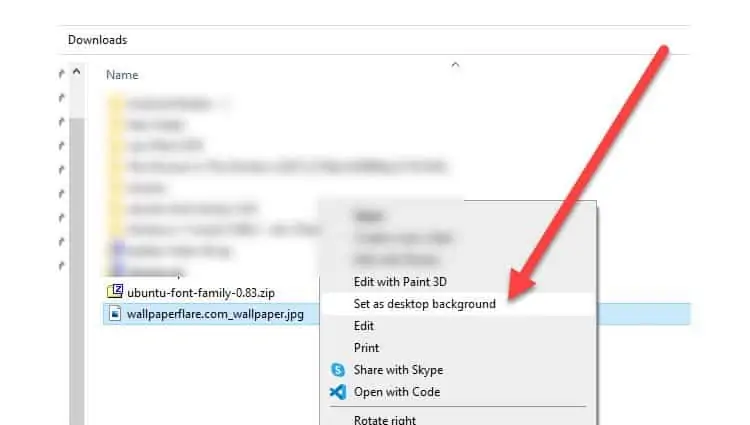
Install WSL
- Open Powershell in Administrator Mode.
- Type
wsl --install. This can take some time to complete. - Go to the Windows App Store.
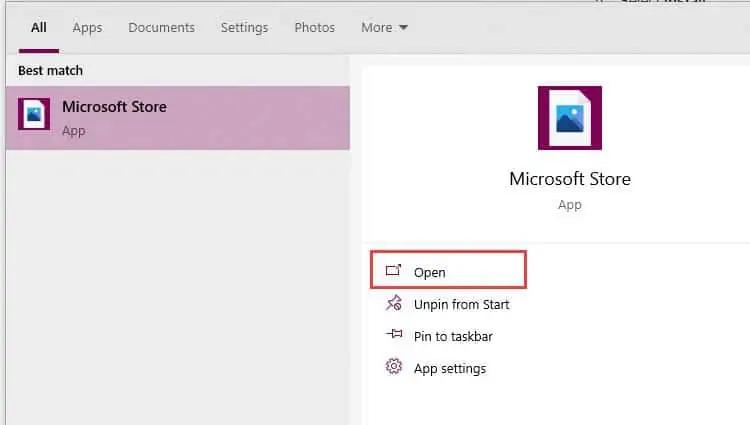
- Search for Ubuntu and open it.
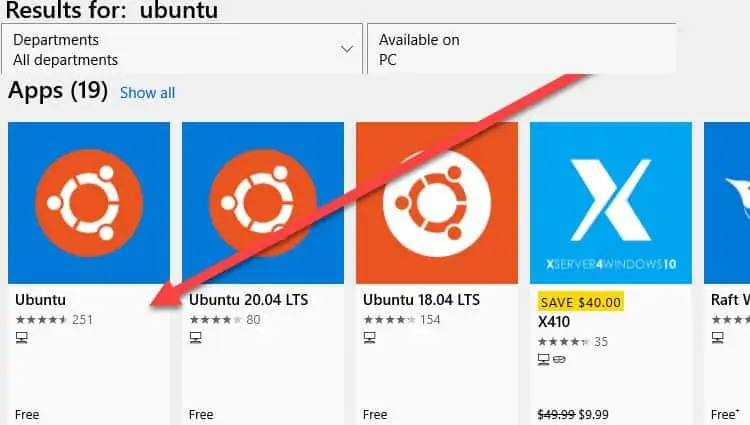
- Select Install.
- Once completed, you can launch Ubuntu from the Start Menu.
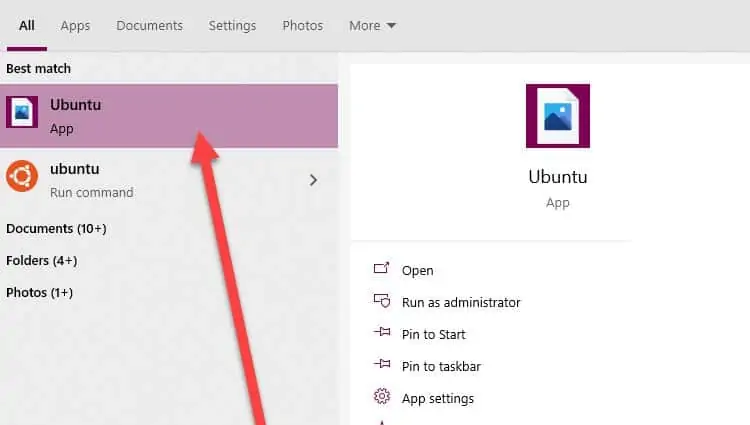
- A terminal window pops up that can be used to enter commands on Windows as if it was an Ubuntu machine.
WSL is one of the ambitious projects by Microsoft. WSL shows its commitment to empowering Linux. Microsoft plans to contribute more to WSL to make it powerful in the future. This means that Windows is going to feel more like Linux in new versions.
Change WSL Terminal Colors and Fonts
- Do a Right-click on the window bar of WSL and select Properties.
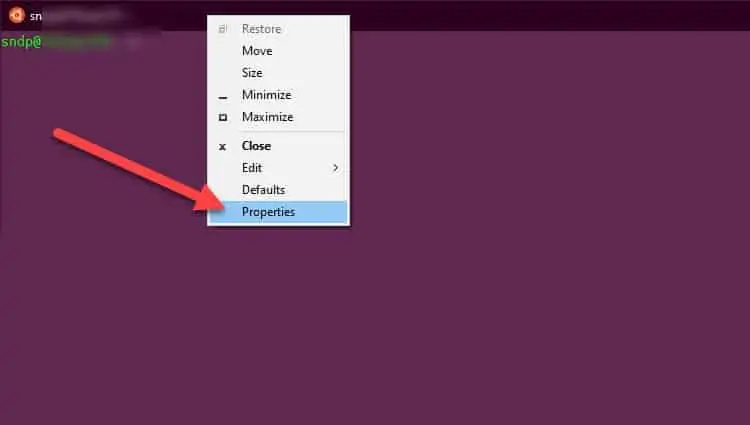
- Select Colors.
- Select Screen Text and click on the White palette.
- Select Screen Background.
- Under the Red Green and Blue values, enter 94, 39, and 80 respectively.
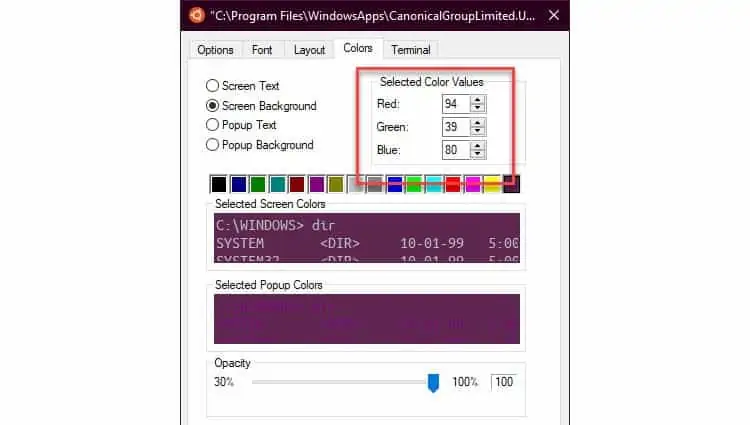
- Select Fonts.
- Select Ubuntu Mono.
- Click OK.
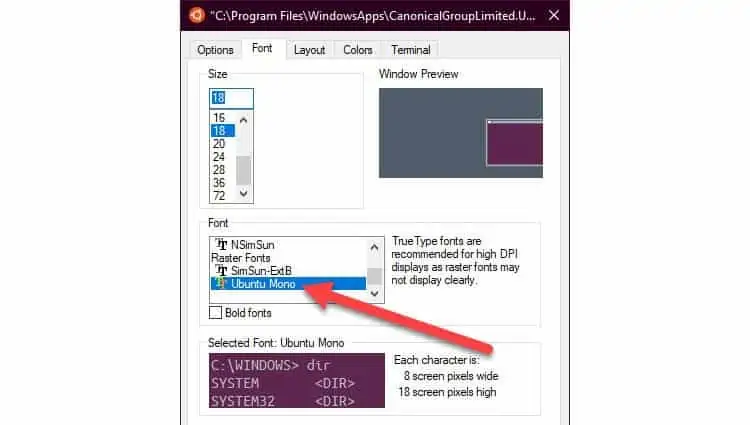
And there you go. The end result would be something like the following screenshots.
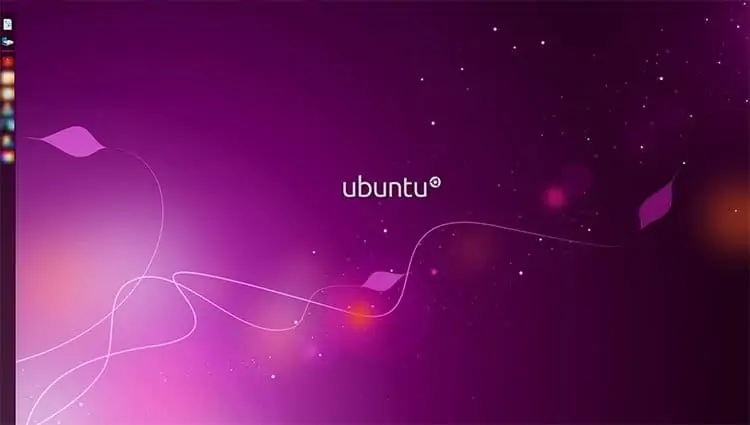
Frequently Asked Questions
Can I Make Linux Look Like Windows?
Unlike Windows, Linux comes with a lot of customization options. You can choose from a wide variety of themes, color combinations, and desktop apps. You can even find out-of-the-box solutions to Linux systems that look like Windows. A few ready-to-go solutions are available below.
LinuxFx
This is a Ubuntu-based Linux targeted at users who are making a switch from Windows. The interface looks as close to Windows as possible. You can choose to either run it as a virtual machine or a USB bootable drive. Or, you can also choose to install it on your PC.
ZorinOS
Zorin OS is designed for both Windows and macOS users who want to switch to Linux. The interface is very simple and intuitive. It also includes many applications by default.
UkUI
UkUI can be installed on default Ubuntu to give it easier customization options. You can choose from a ton of icons, fonts, and interface options to make Ubuntu look like Windows 10.
